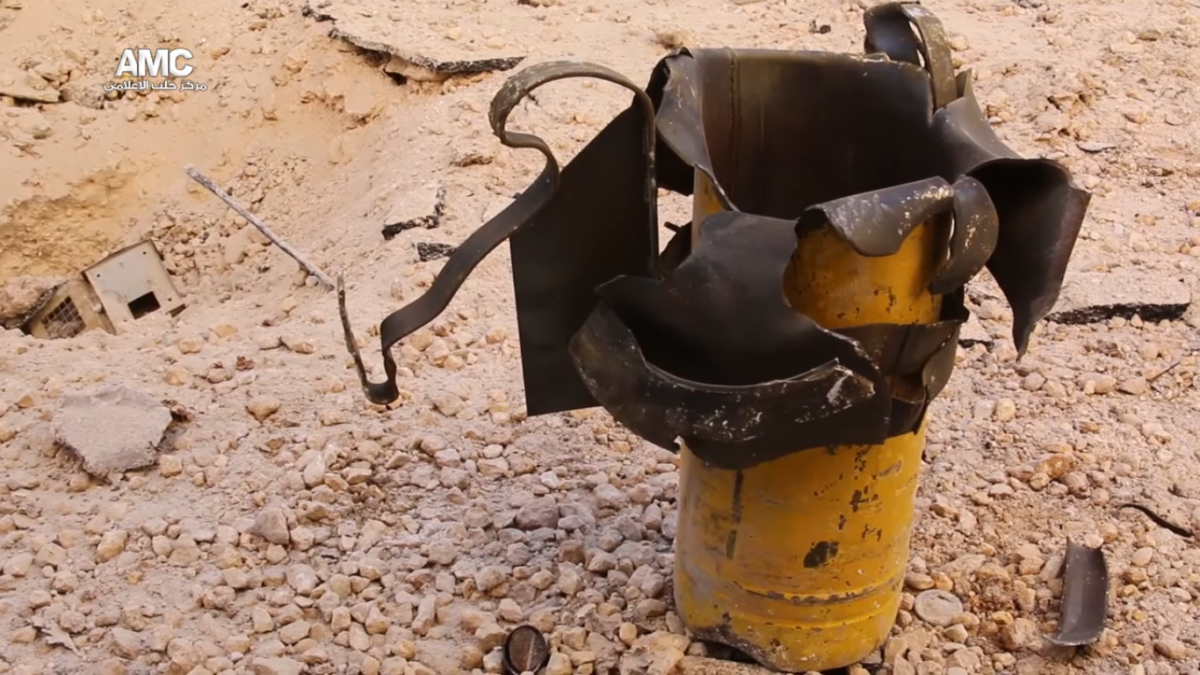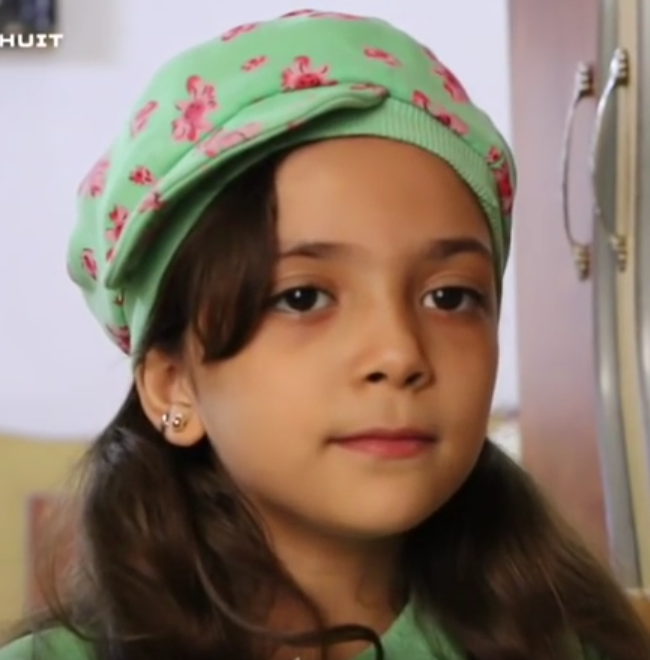Islamic State Captures Masses of Iranian-supplied Weaponry Near Khanasir
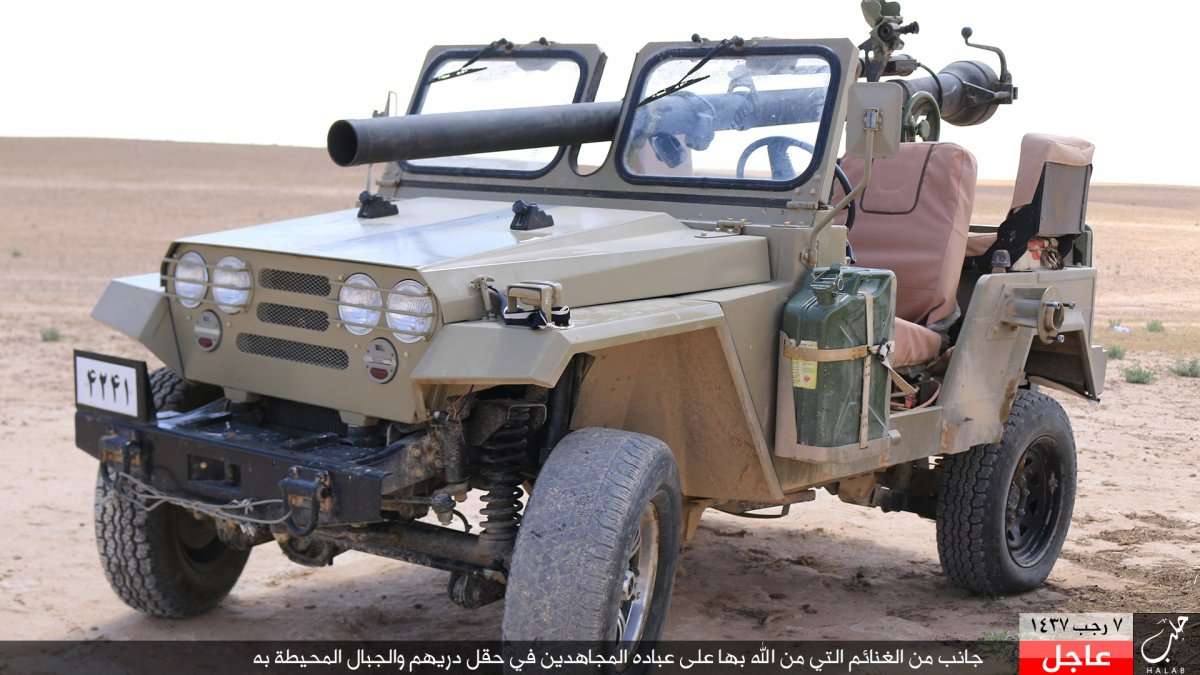
An Islamic State offensive near Khanasir, Eastern Aleppo, managed to overrun defending forces, capturing several checkpoints nearby and large amounts of weaponry stocked there in the process. The town of Khanasir, a dusty and deserted place carrying without a doubt the heaviest strategic weight on its shoulders of any town of its kind in Syria. The highway that runs through it is effectively the only access route to embattled Aleppo, and the Islamic State’s advances mean that regime forces fighting in the city might soon be completely cut off for some time. This is also the reason why when the Islamic State first captured the town back in late February, the regime was quick to launch an offensive to take back the town, which happened several days later. Nonetheless, the Islamic State’s losses were relatively low and the attention the offensive received made it a propaganda victory if not a strategic one. The amount of ghaneema (spoils of war) captured was also substantial, consisting of several tanks, armoured vehicles, artillery and small arms. The Islamic State’s second assault on the city and its surroundings appears to have trumped even these earlier gains, as masses of Iranian-supplied small arms and munitions to even a Sarab-1 equipped T-72M1 fell in the hands of the fighters of the Islamic State.
The many checkpoints covering the road going through Khanasir have in typical Syrian Arab Army (SyAA) fashion always been overstocked with arms, resulting large amounts of weaponry being captured by the Islamic State that were dumped around the base as there simply was no personnel to man them. This situation also led to the first capture of Khanasir, where the local garrison found itself unable to counter the swift and unexpected push on the town. After quickly recapturing the town, the new garrison left to defend the town and its surroundings did not only consist of local SyAA and National Defence Force (NDF) fighters, but also of Iraqi Shiite militias and even Iranian soldiers. Indeed, while already obvious by the large amounts of Iranian weaponry, Iranian clothing and Iranian documents, one Iranian helmet captured by fighters of the Islamic State clearly reads: ‘IR Army’.
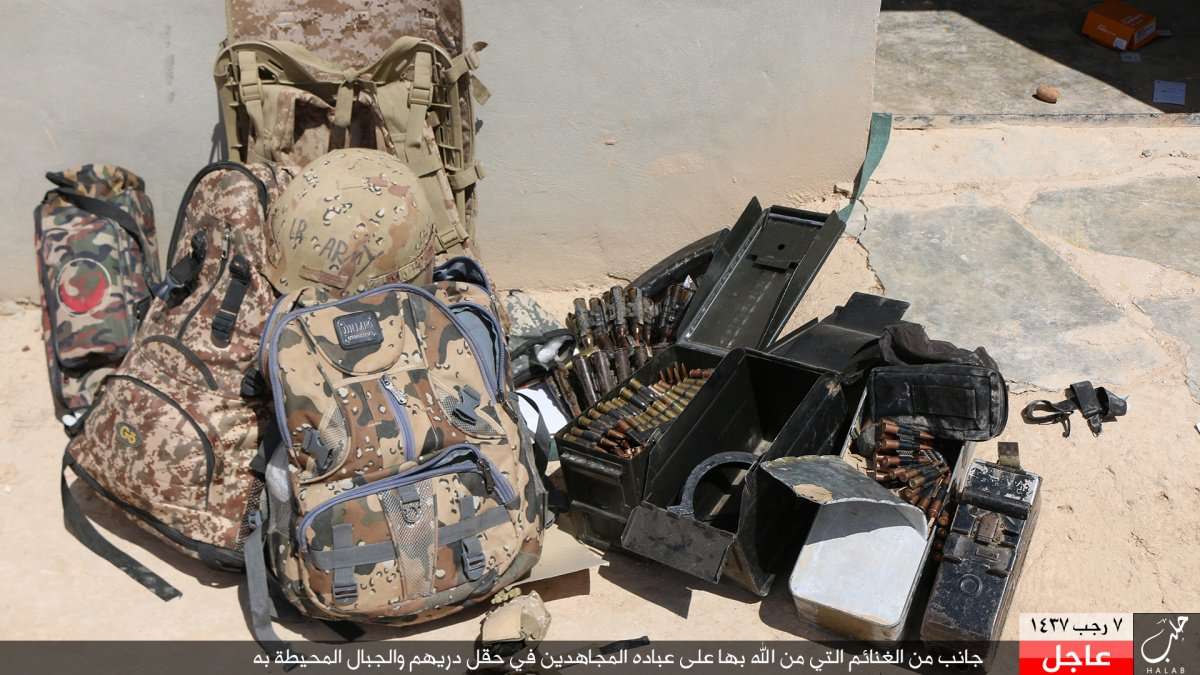
While the fighters of the Islamic State did capture soldiers after gaining control over several checkpoints, all of them were Syrian, raising questions about the amount of Iraqi and Iranian soldiers actually stationed here. Although some of the Iranian equipment could obviously have been used by Syrian soldiers, the presence of Shi’a unit patches and Iranian military gear (including a helmet with “IR army” written on it) leaves no doubt about the presence of foreign fighters. Whether these fled in the face of Islamic State soldiers or simply withdrew during the fighting is unknown.
The spoils left behind also illustrate the continuously growing influence of foreign military equipment on the conflict: Islamic State forces can now be seen operating anything from the Iranian equipment and newly delivered Russian field guns to U.S.-made weaponry
While it is unlikely the Islamic State will be able to capture huge swats of lands and retain them like they did in previous years, quick and well executed offensives as seen lately in Dumeyr, Northern Aleppo and now Eastern Aleppo will continue to provide the Islamic State with new weaponry, and may delay its inevitable downfall significantly.
This is an approximate guess of the captured weapons and ammunition featured in the photo report. The content of at 89 least crates could not be identified, but are likely to be artillery shells.
Ammunition:
– 18,010 rounds of 7.62×39 and 7.62x54R ammunition.
– 430 rounds of 12.7×99 ammunition.
– 90 rounds of 12.7×108 ammunition.
– 2634 rounds of 23mm ammunition.
– 26 rounds of 60mm ammunition.
– 30 rounds of 106mm ammunition.
– 3 rounds of 107mm ammunition.
– 30 rounds of 122mm MRL ammunition.
– 45 rounds of artillery ammunition.
– 43 charges for artillery rounds.
– 55 (PG)-7 rocket-propelled grenades.
– 7 RPG boosters.
– 39 grenades.
Weaponry:
– 64 7.62mm AK(M)-47s.
– 5 7.62mm PKMs.
– 2 7.62mm SVD Dragunov.
– 1 7.62mm PSL.
– 1 12.7mm DShK.
– 1 14.5mm KPV.
– 10 RPG-7s.
– 1 60mm mortar.
– 1 130mm M-46 field gun.
– 2 122mm D-74 field gun.
– 1 152mm D-20 howitzer.
– 1 M40 106mm RCL.
Vehicles:
– 1 T-72M1 (equipped with the Sarab-1).
– 1 122mm 2S1 Gvozdika.
– 1 Safir.
– 1 GAZ-3308s.
– 1 Tatra 148.
– 1 Tatra 815s.
– 1 truck.
– 3 technicals.
– 2 motorcycles.
Interestingly, the T-72M1 encountered during the offensive is the first Sarab-1 equipped vehicle to have been captured by opponents of the regime. Covered by the means of tarp on this T-72M1, the exact role of the Sarab-1 is still debated upon but has been deployed on a range of vehicles and checkpoints. It likely makes uses of infrared lamps to confuse the TOW’s gunner, thus missing its intended target.

Also encountered were five artillery pieces, making up most of heavy armament captured during this offensive. One 122mm Gvozdika self-propelled howitzer, one 130mm M-46 field gun, two 122mm D-74 field gun and one 152mm D-20 howitzer fell in the hands of the fighters of the Islamic State. Both the D-20 and D-74 were delivered by Russia to Syria in the past year, and were not present in the arsenals of the SyAA before the start of the Civil War.
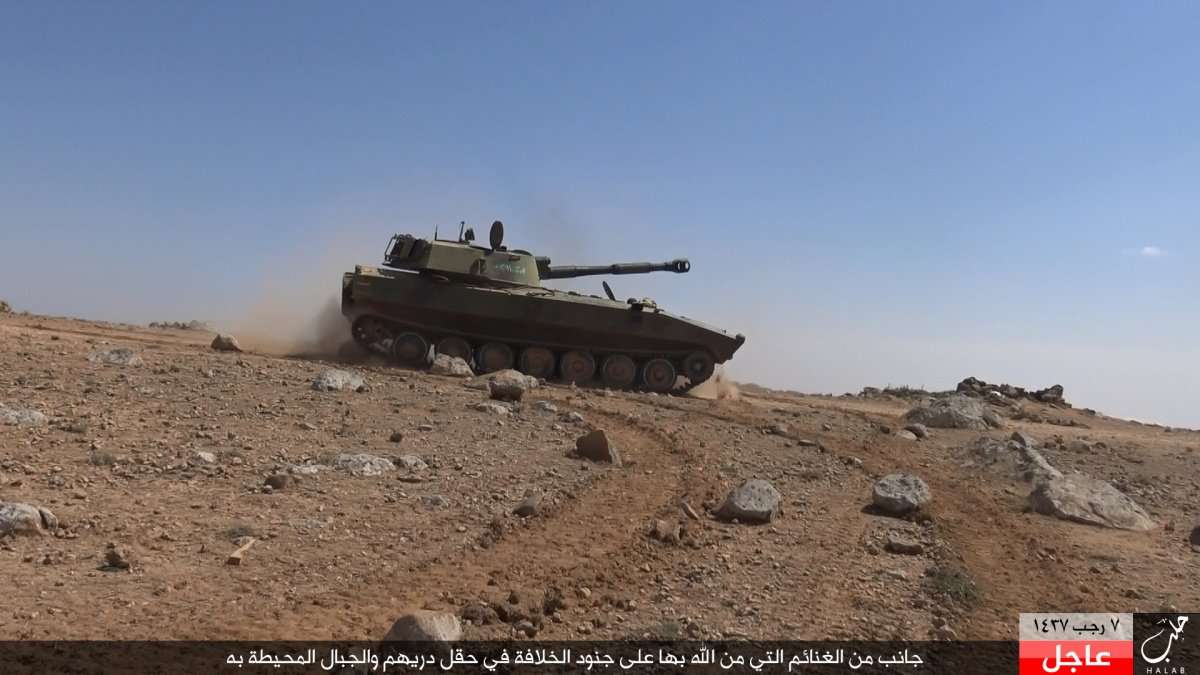
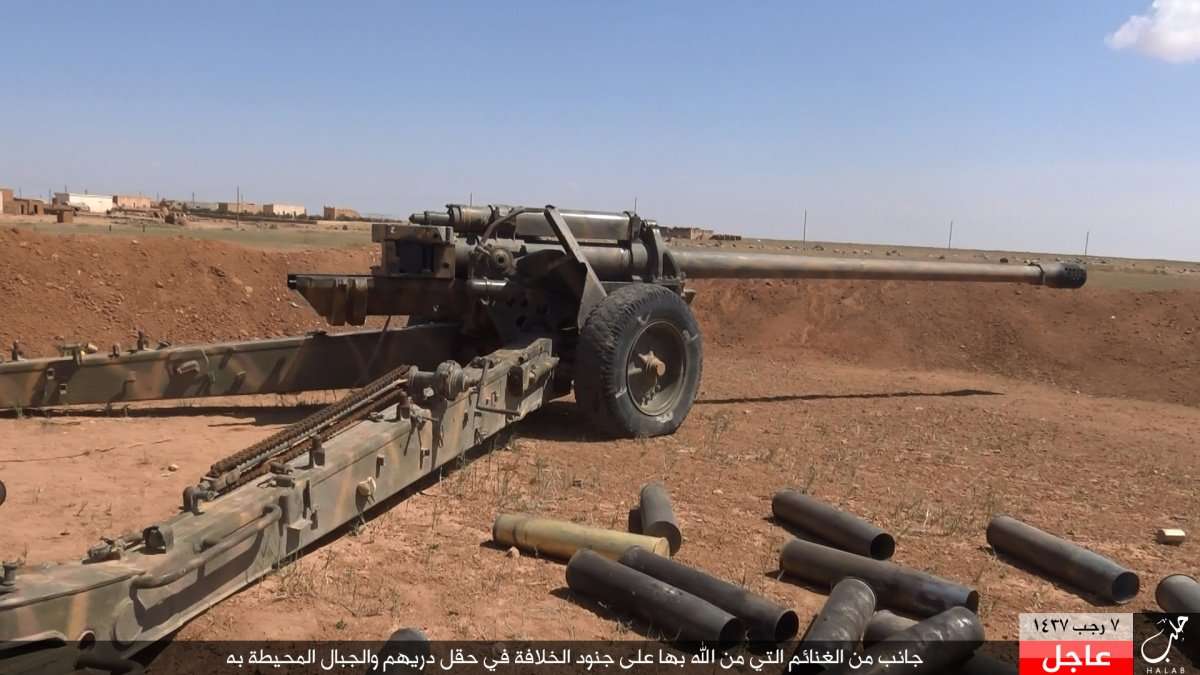
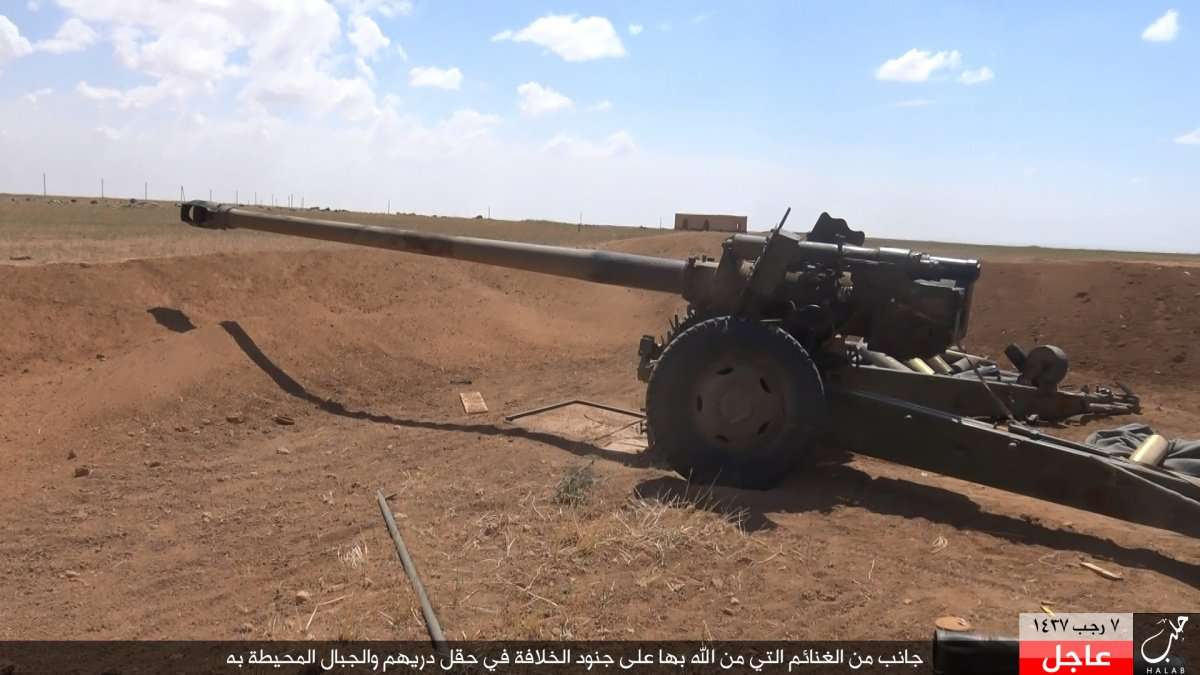
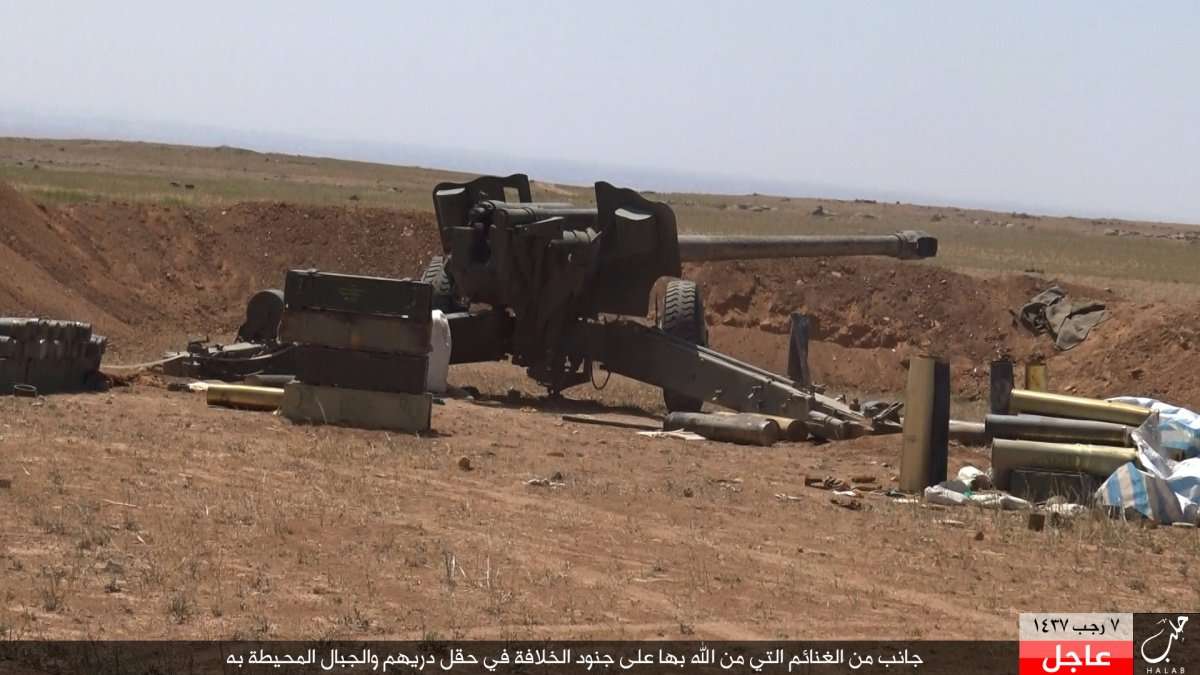
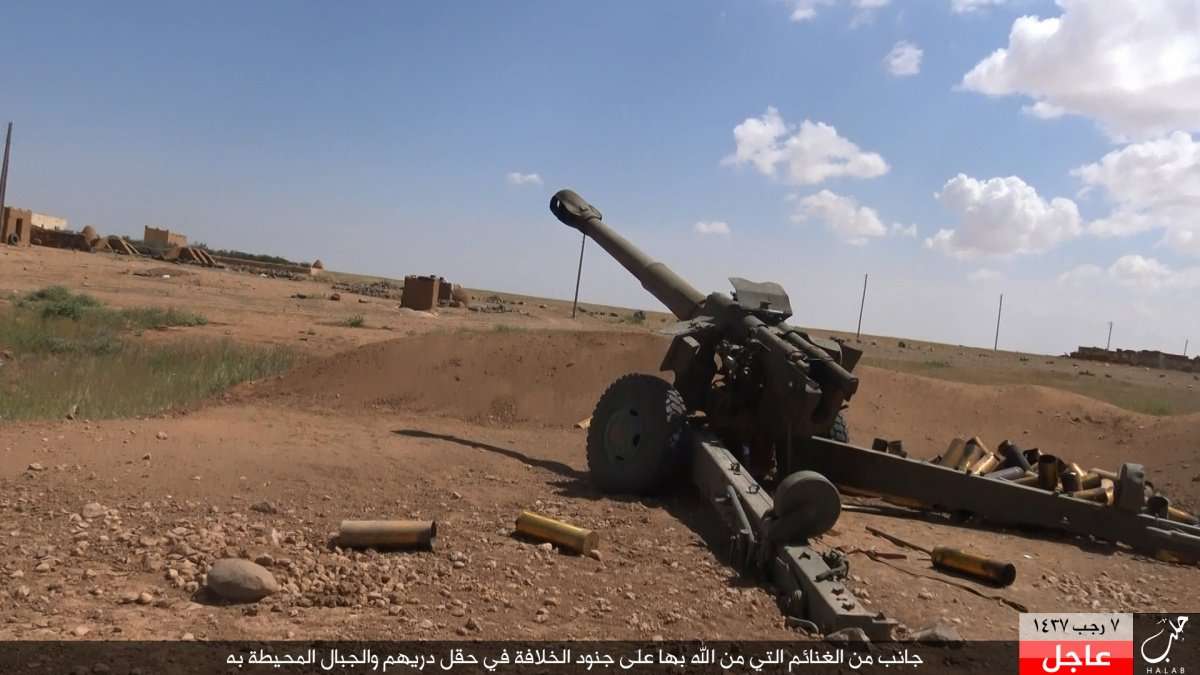
Some of the technicals to have fallen in the hands of the Islamic State, including the infamous Iranian designed and produced Safir 4×4, here seen armed with a M40 106mm recoilless rifle (RCL).
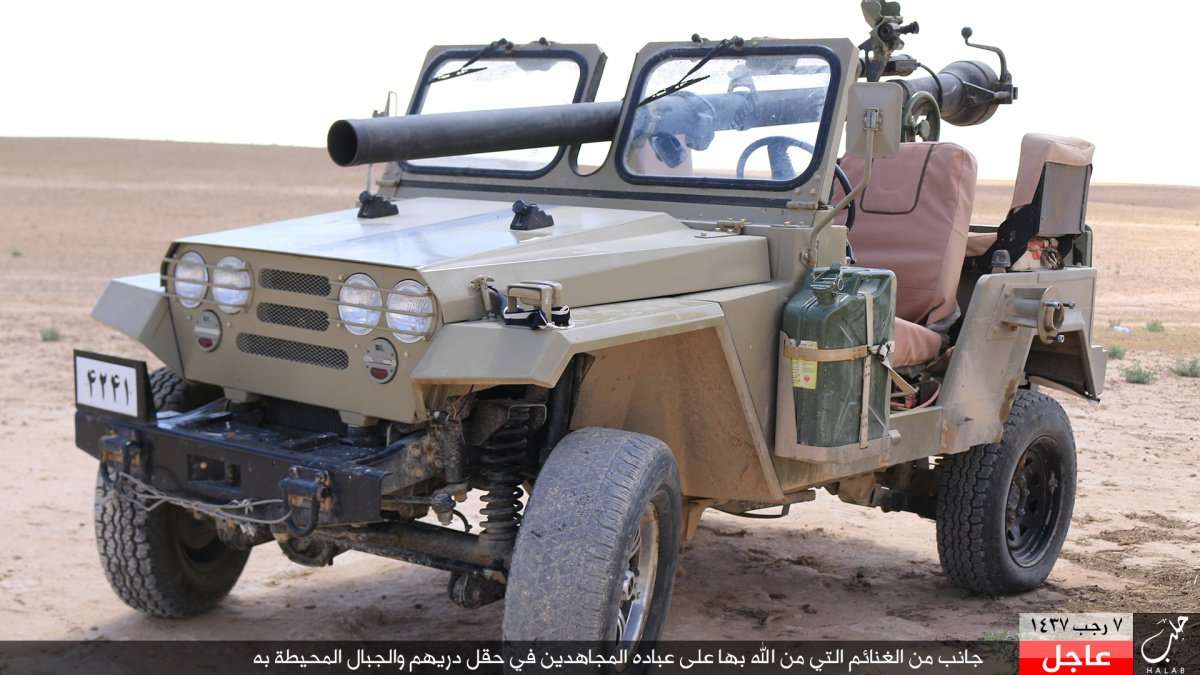
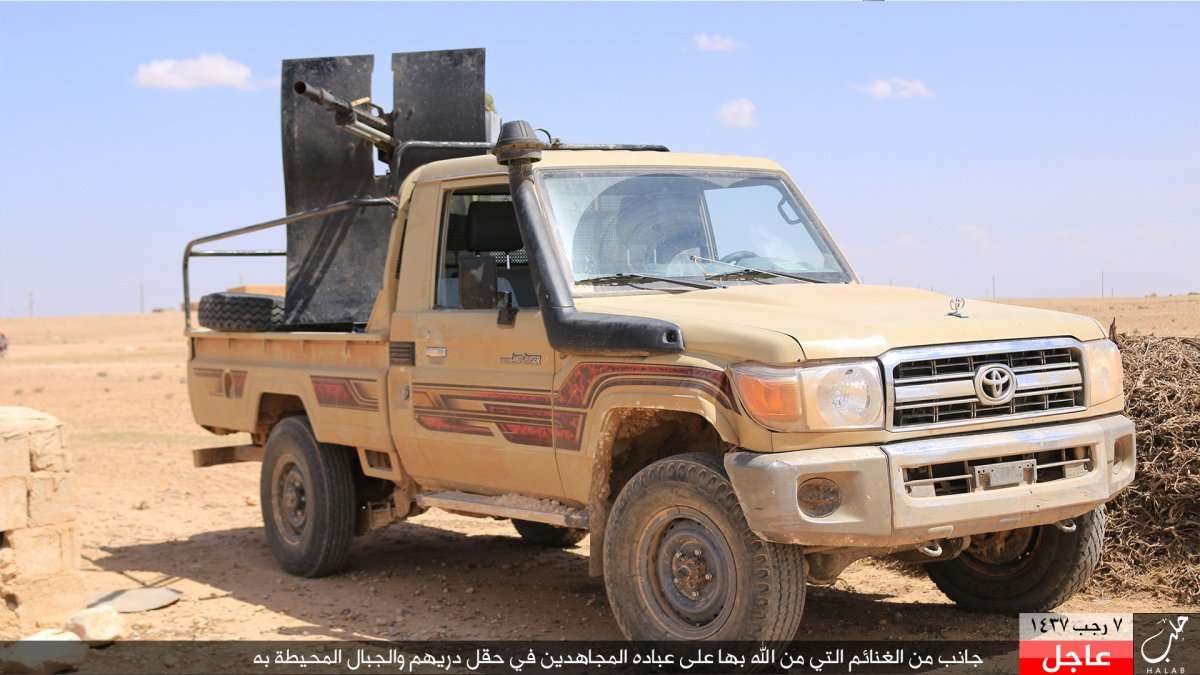
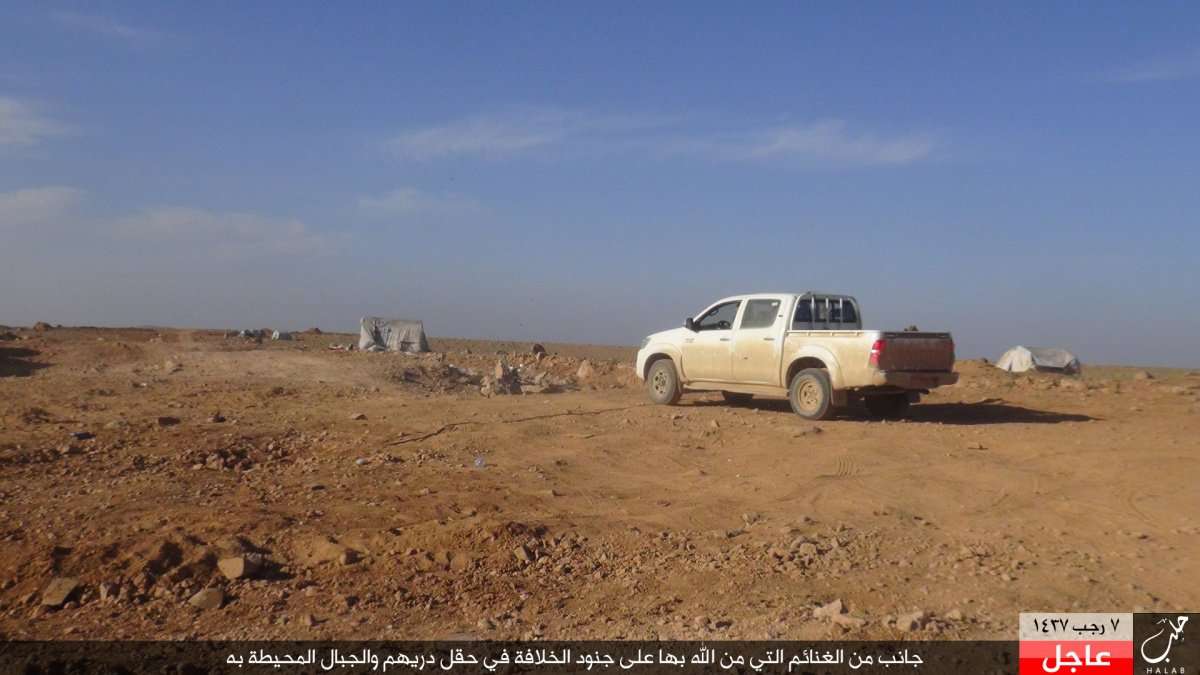
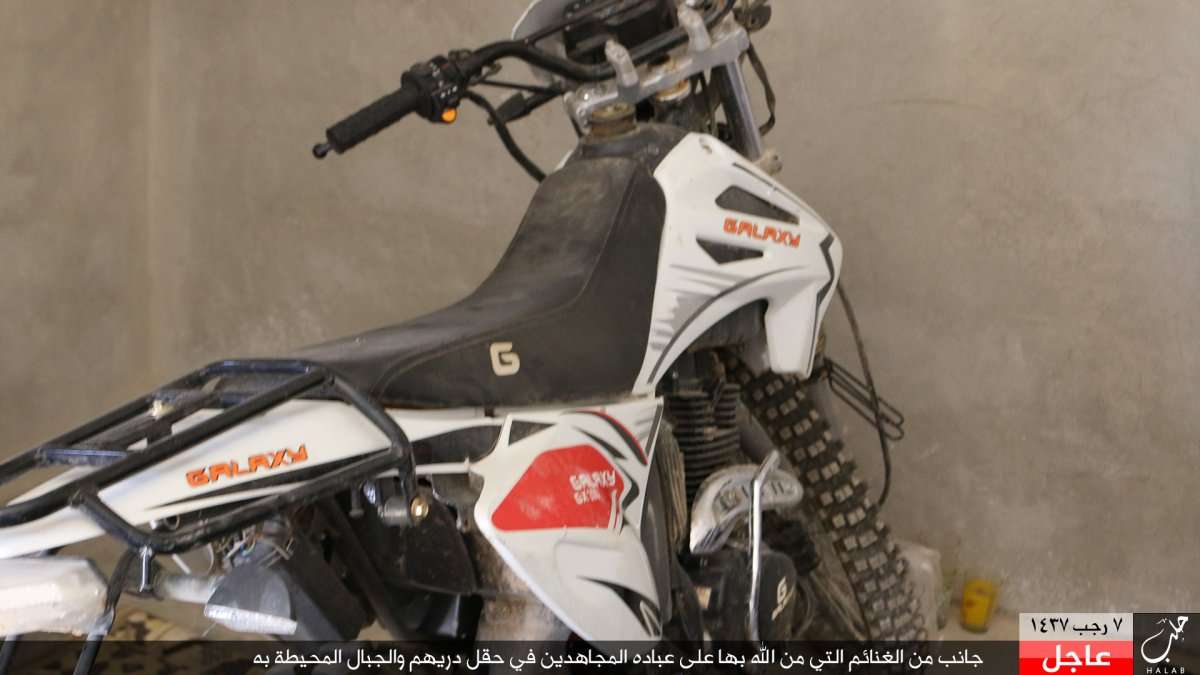
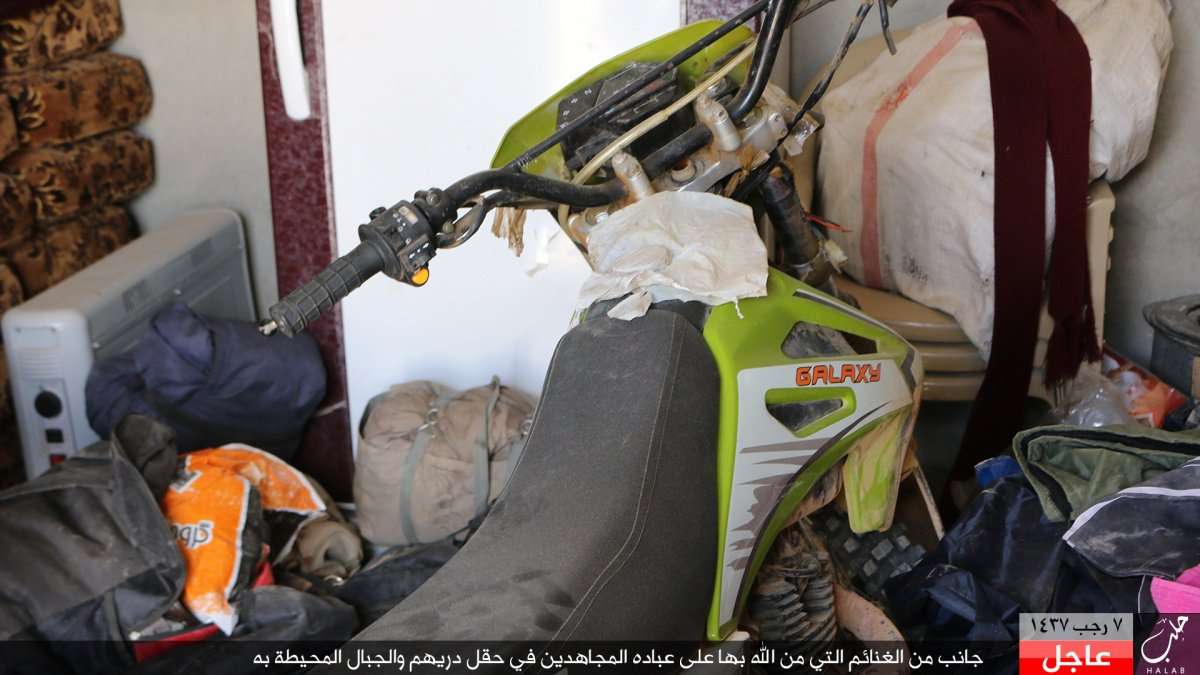
Three trucks, two of Czechoslovak descent. The oldest, the Tatra 148 can already be seen being loaded with captured ammuntion, likely to be transported further away from the frontline for distribution to other fronts. The Tatra 815 and Russian GAZ-3308 represent some of the more modern trucks in service with the SyAA.
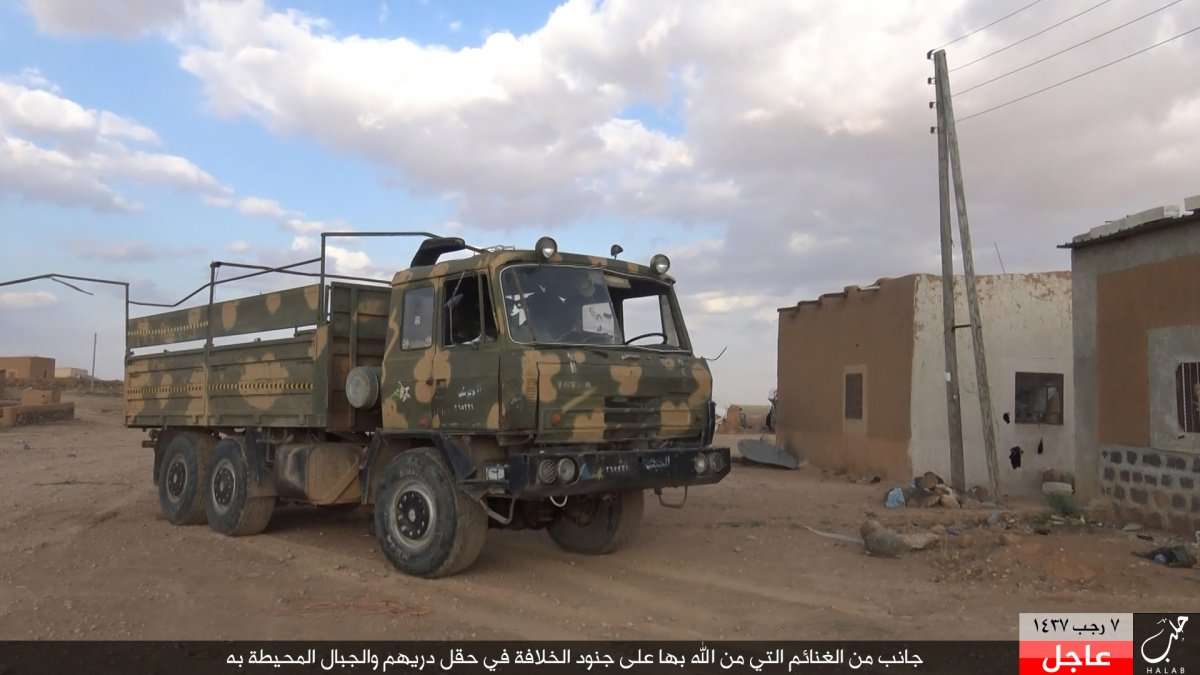
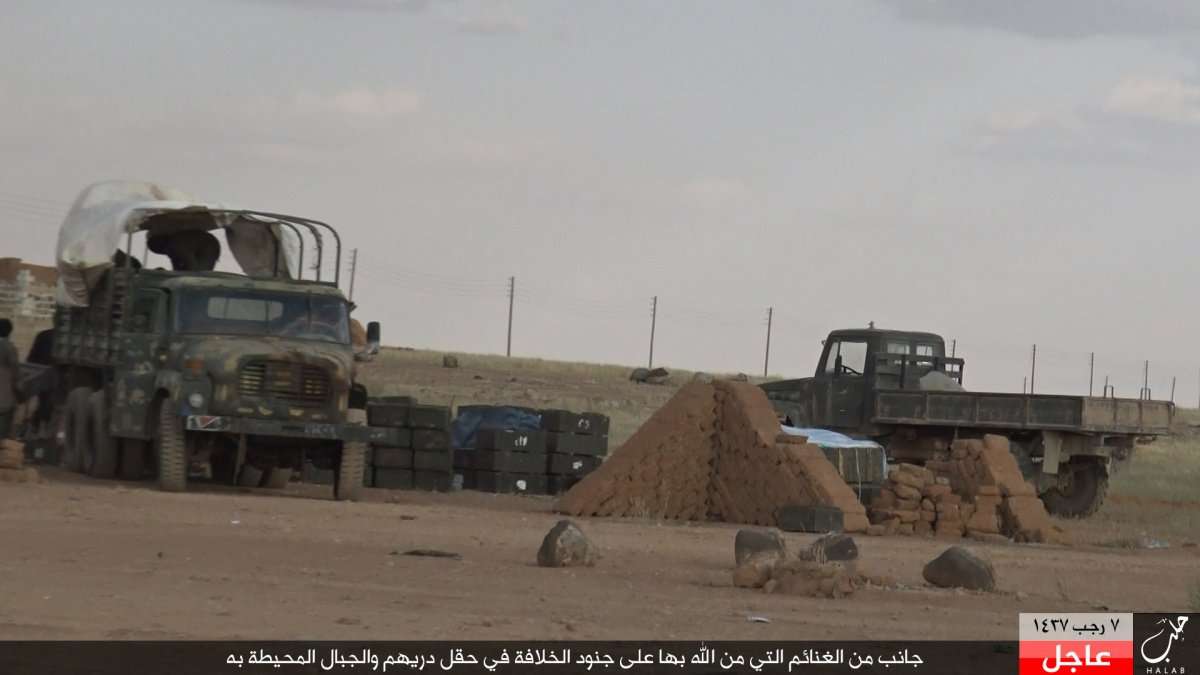
Small arms, including everything from a Soviet Mosin-Nagant rifle to an Iranian 60mm mortar. Several AK-47s upgraded with picatinny rails, allowing for the installment for sights and other gadgets, were also encountered. These rifles are almost exclusively seen in use with Iraqi fighters, which more often than not take their personal weapons with them from Iraq.
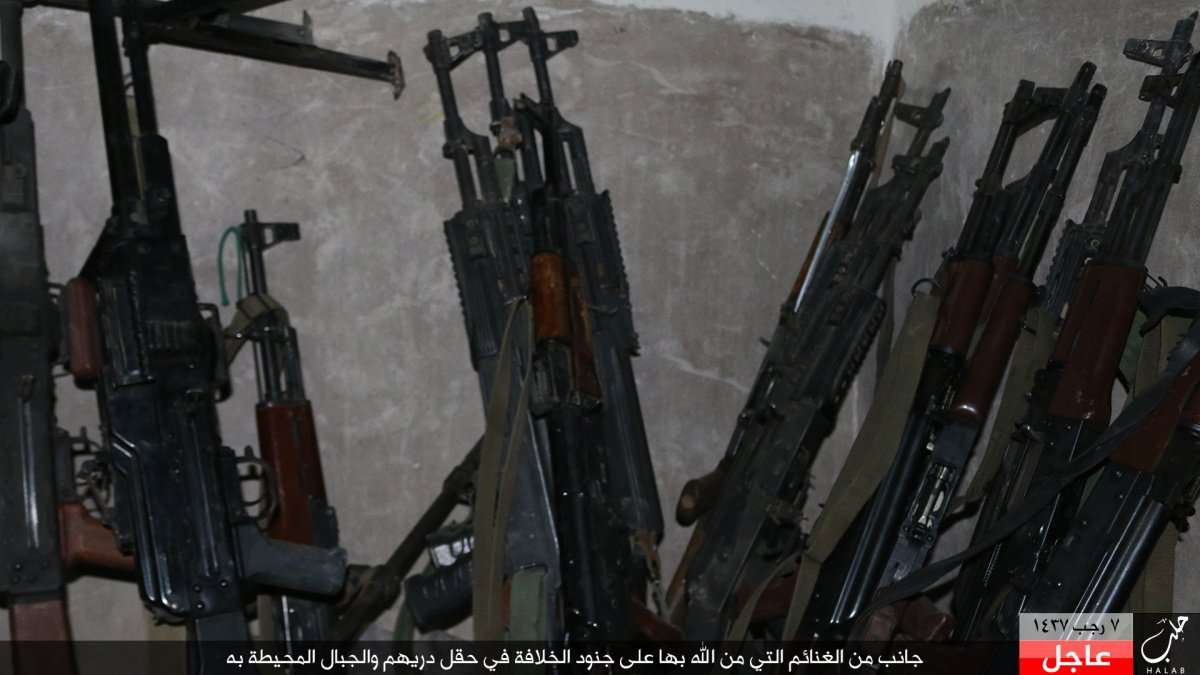
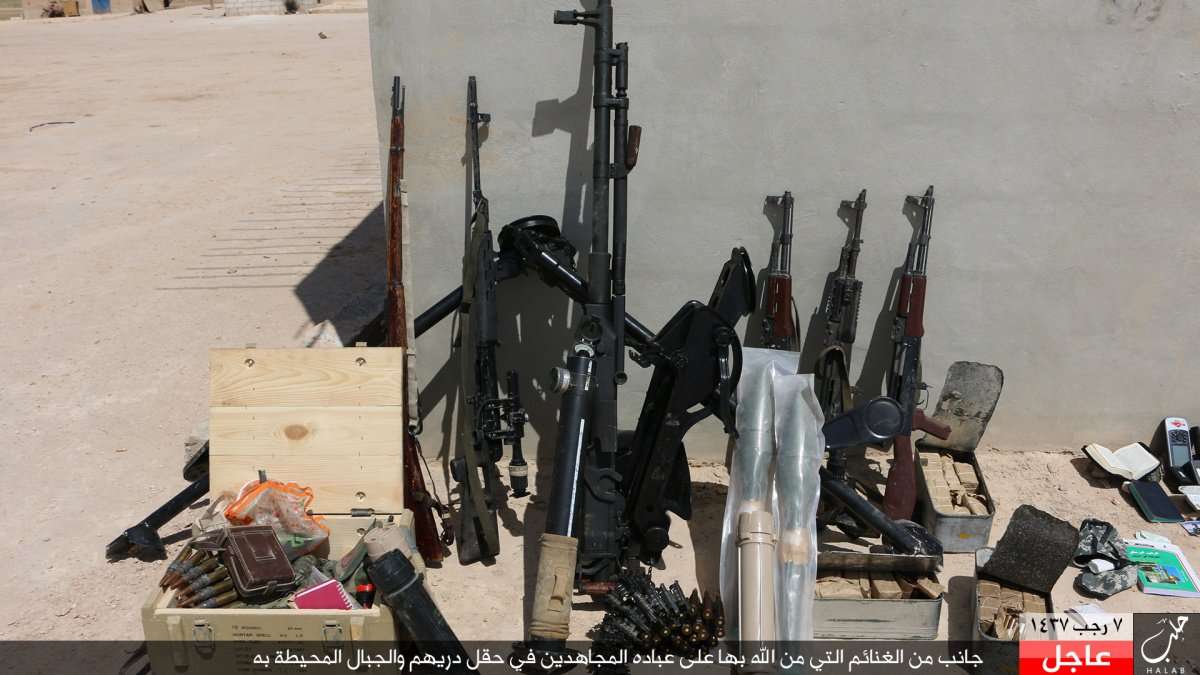
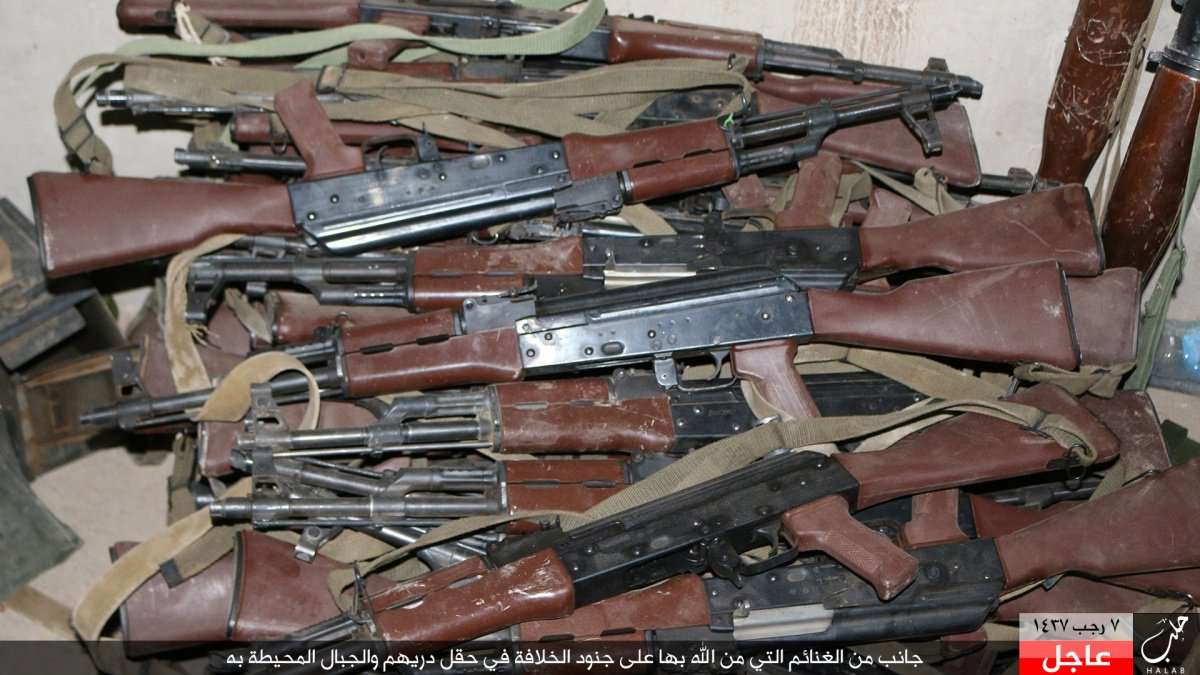
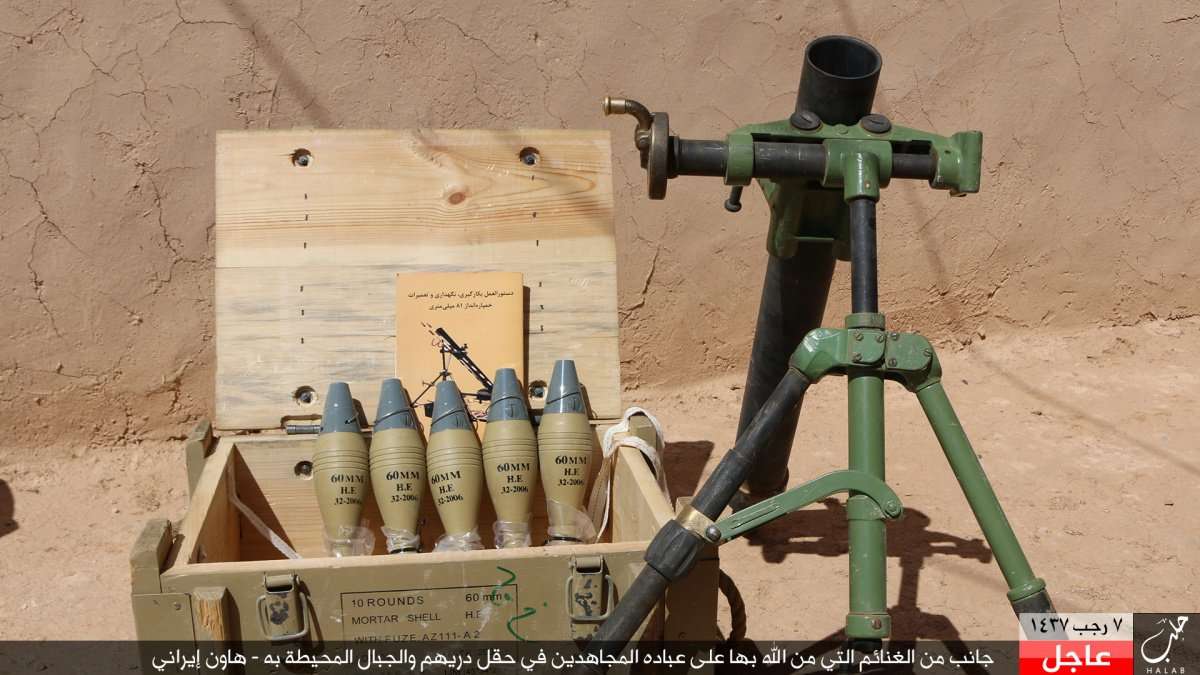
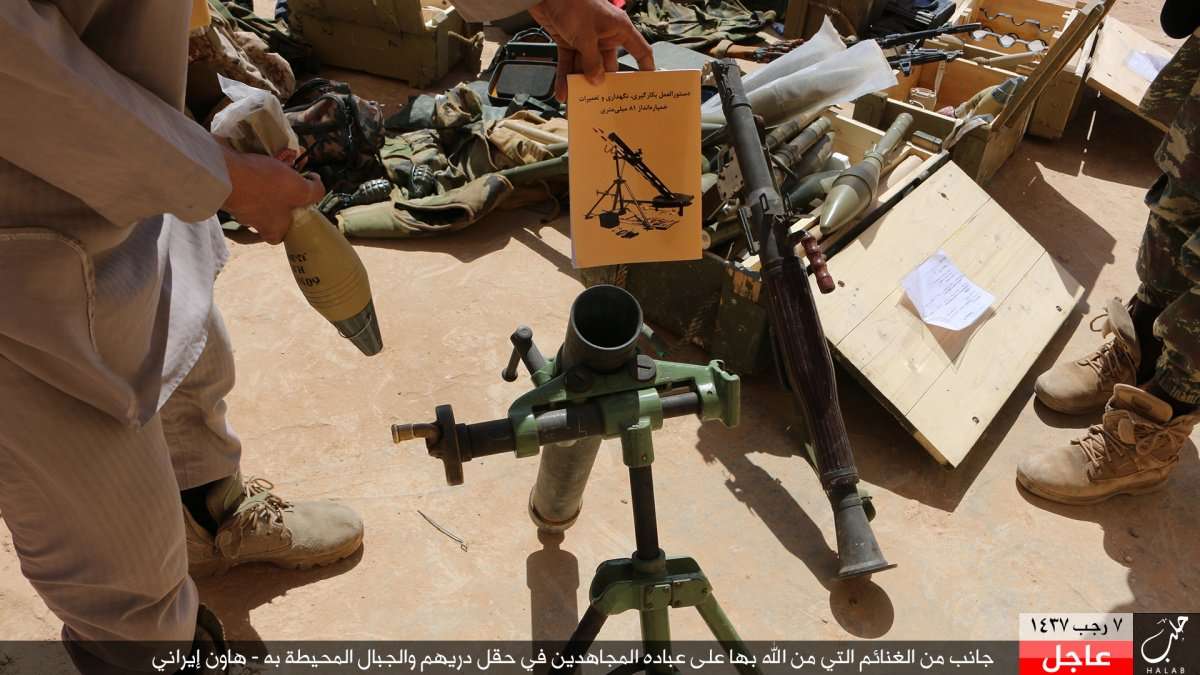
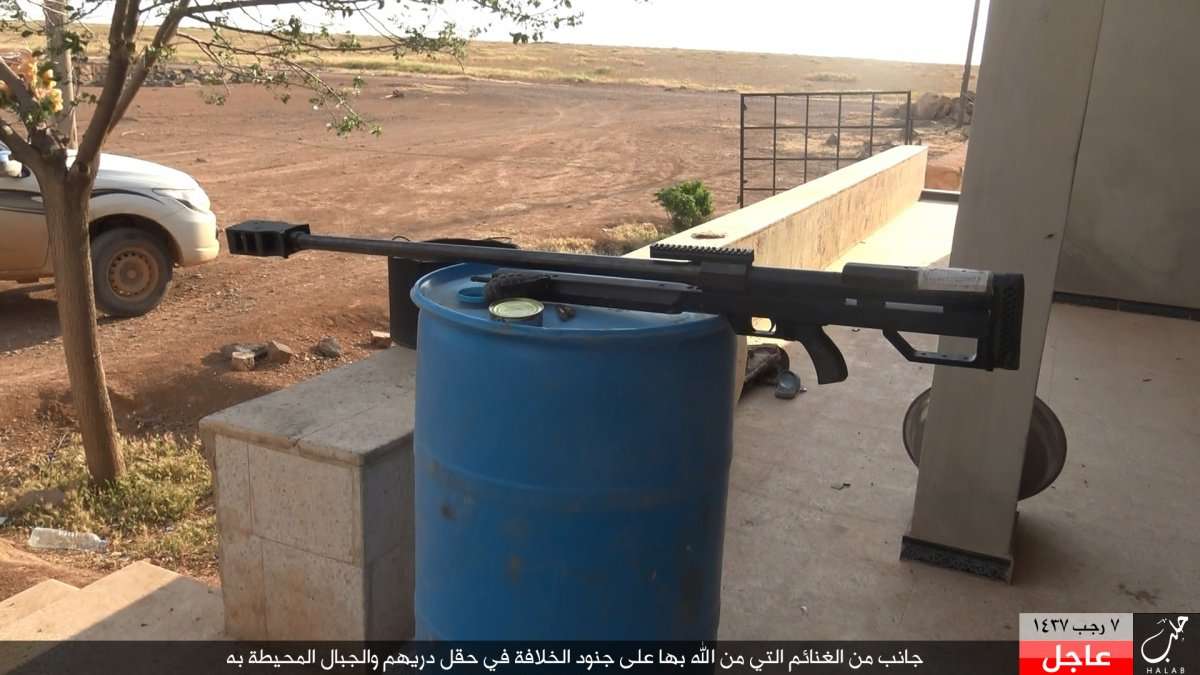
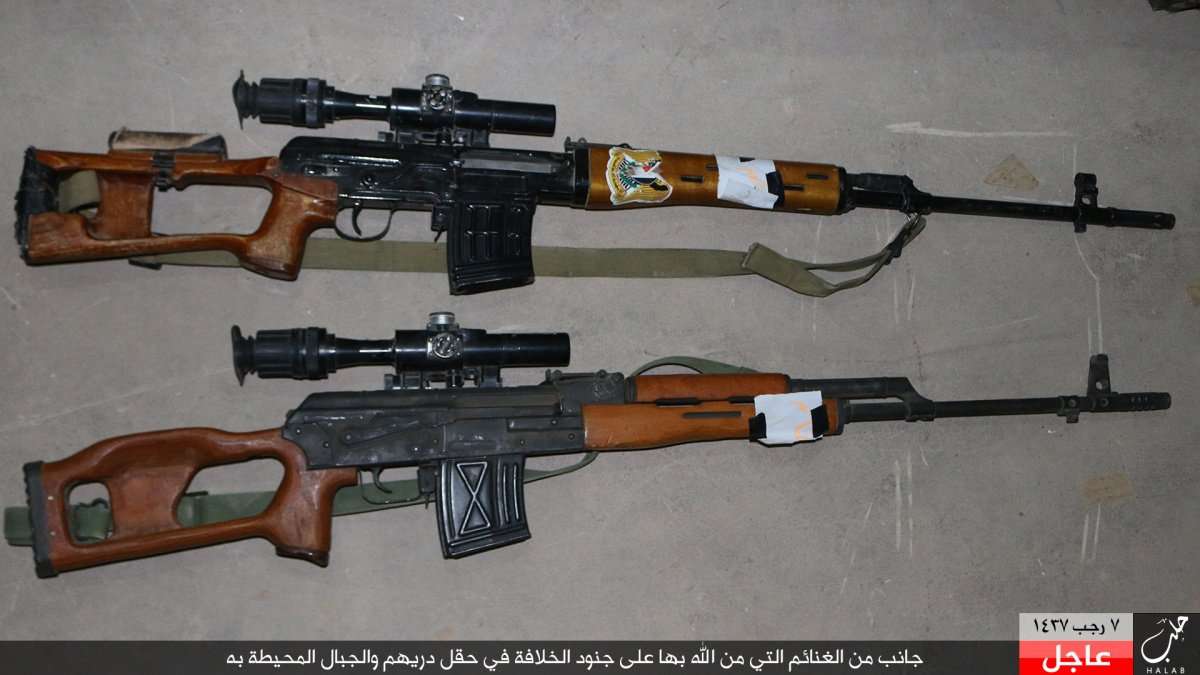
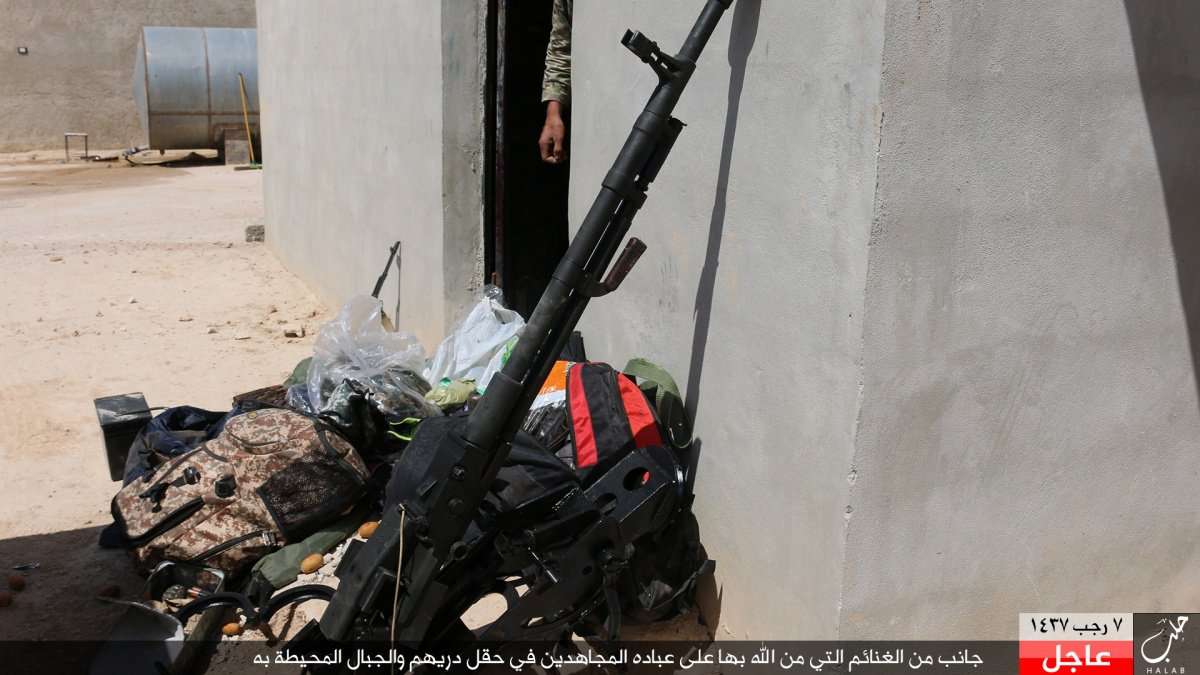
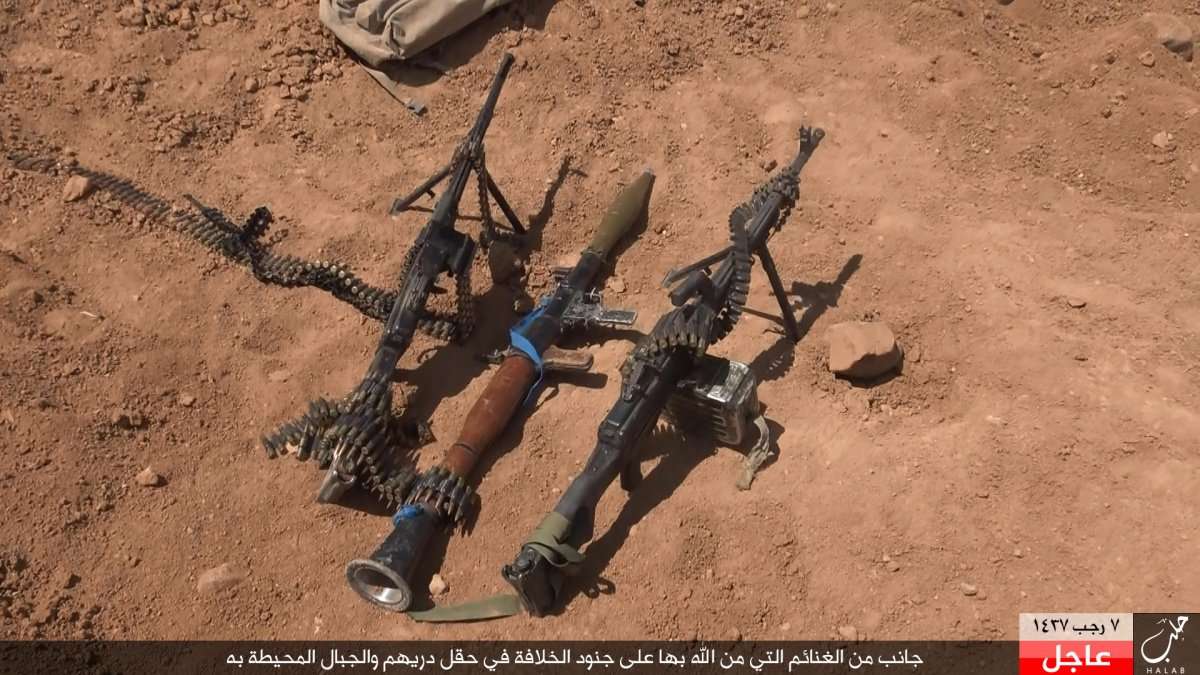
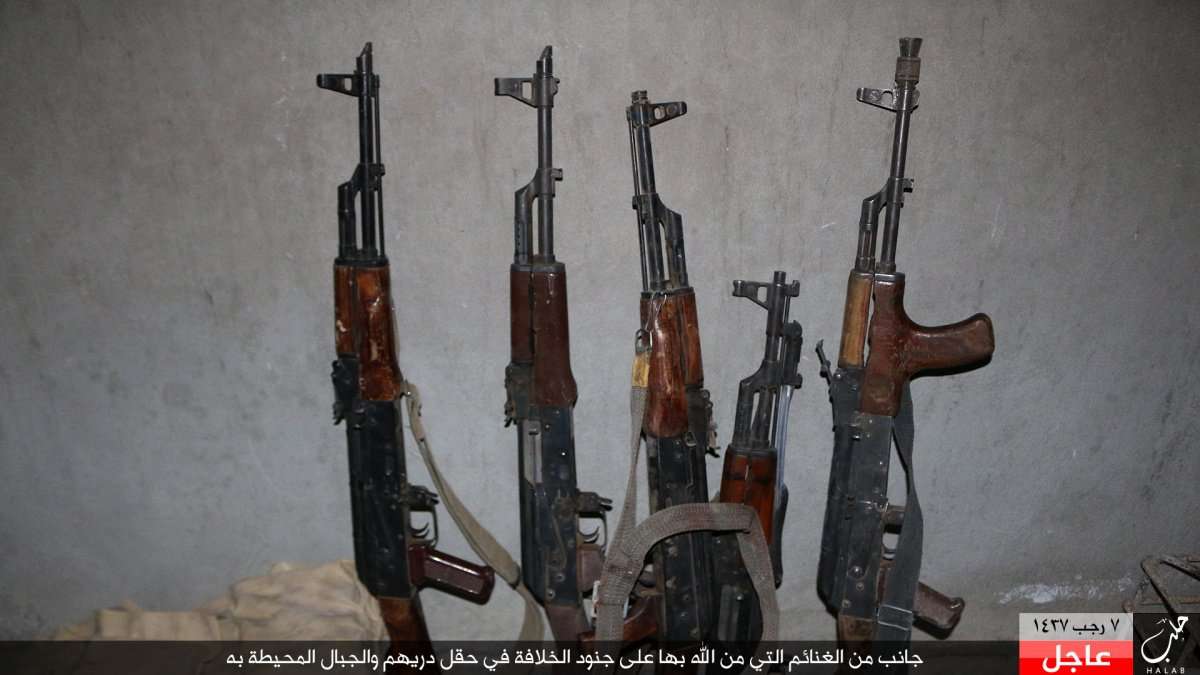
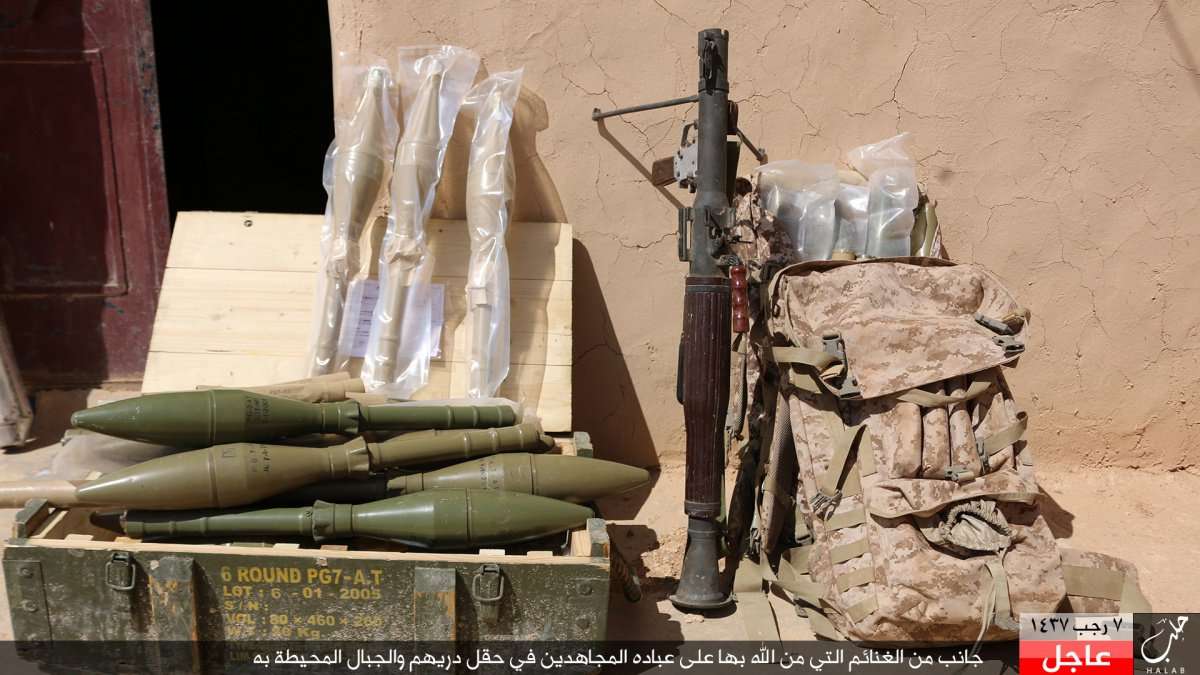
Almost all of the ammunition was Iranian supplied, and includes both recently produced products and ammunition produced in the seventies. Although 122mm multiple rocket launcher (MRL) was pictured, the presence of thirty 122mm rounds indicates a single-barreled launcher is likely present somewhere. As often seen, crates and products are labeled both in Farsi and English.
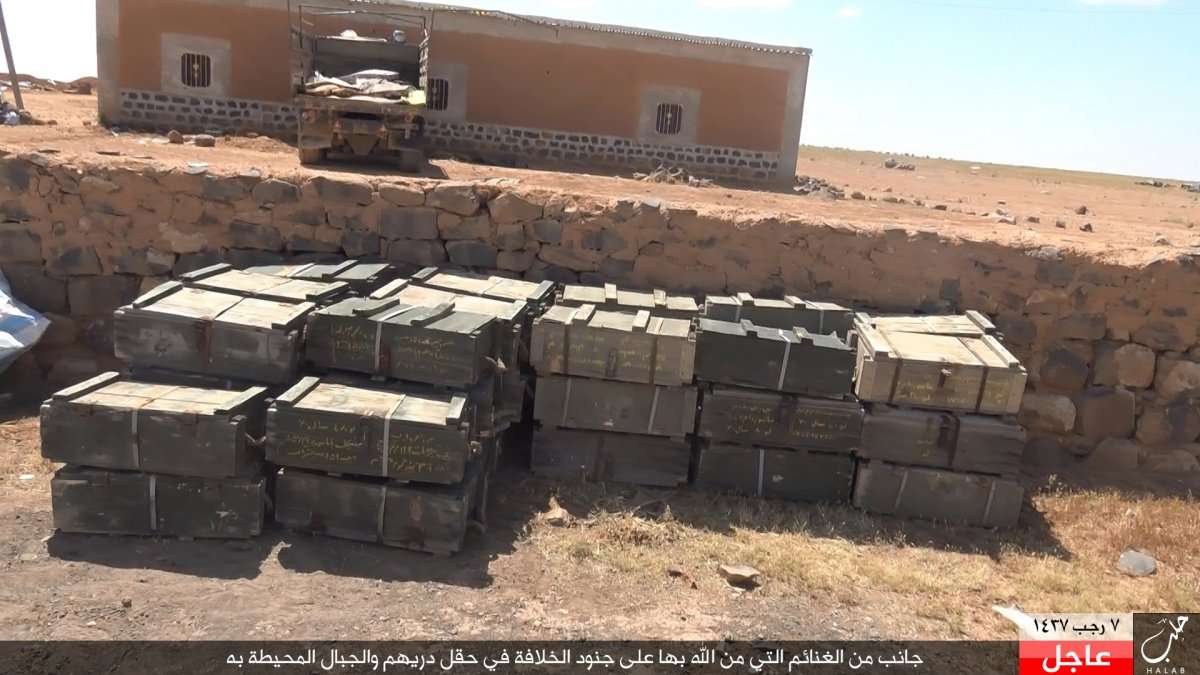
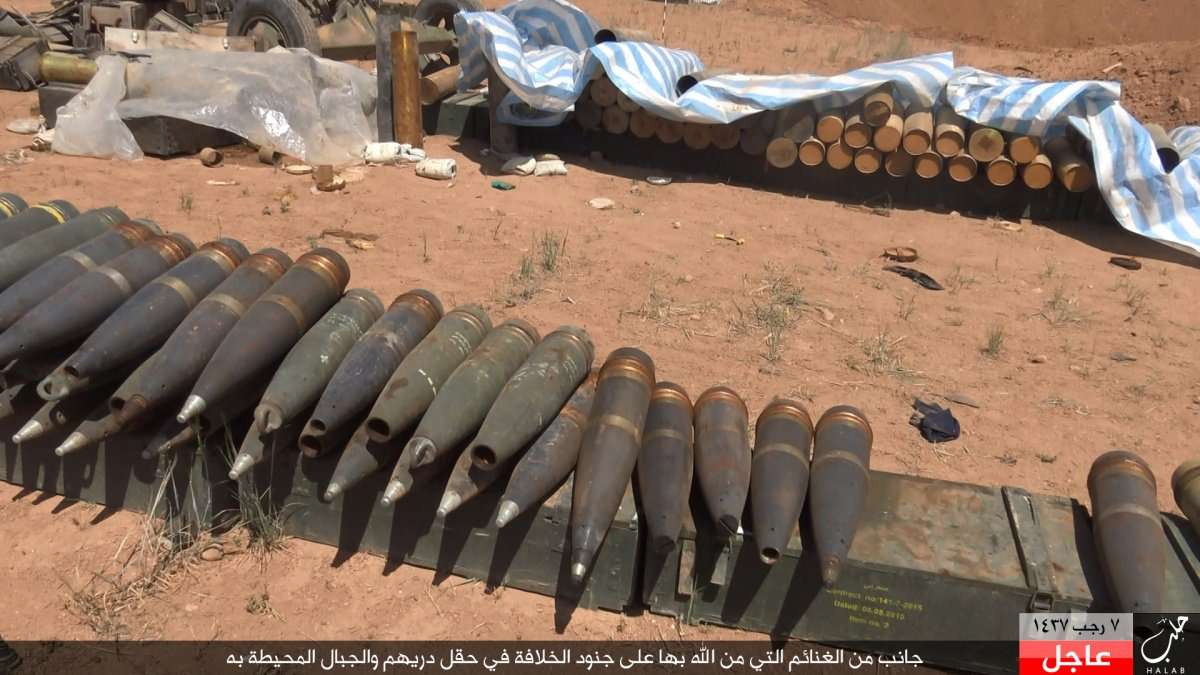
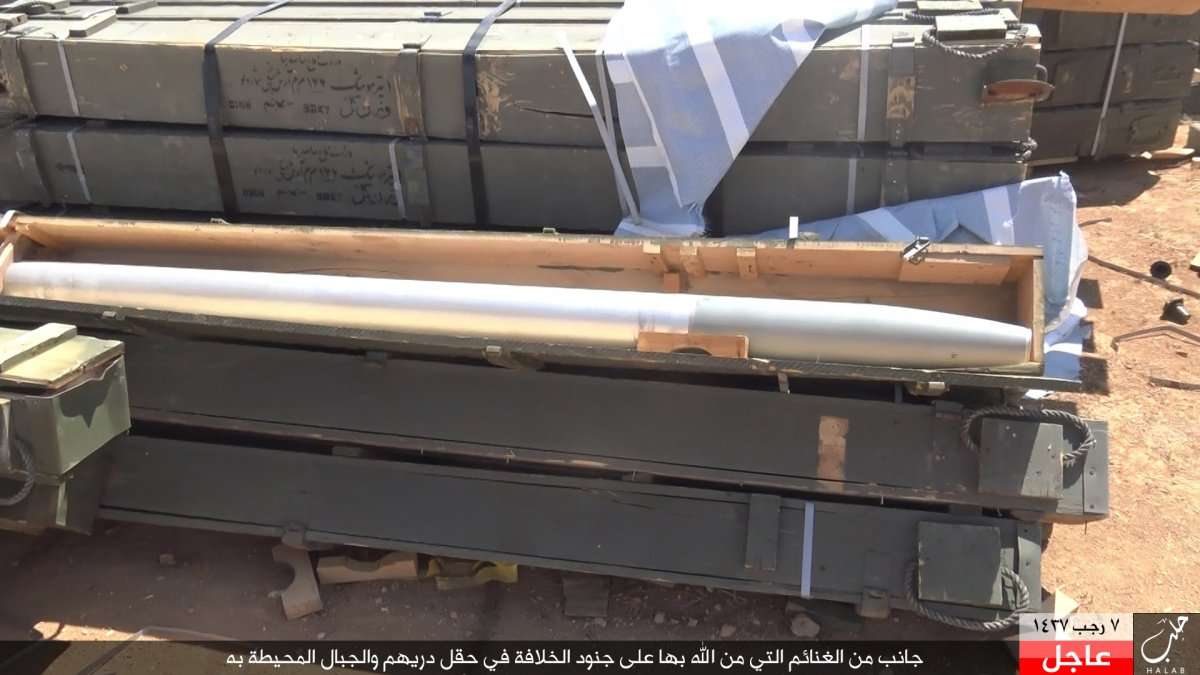
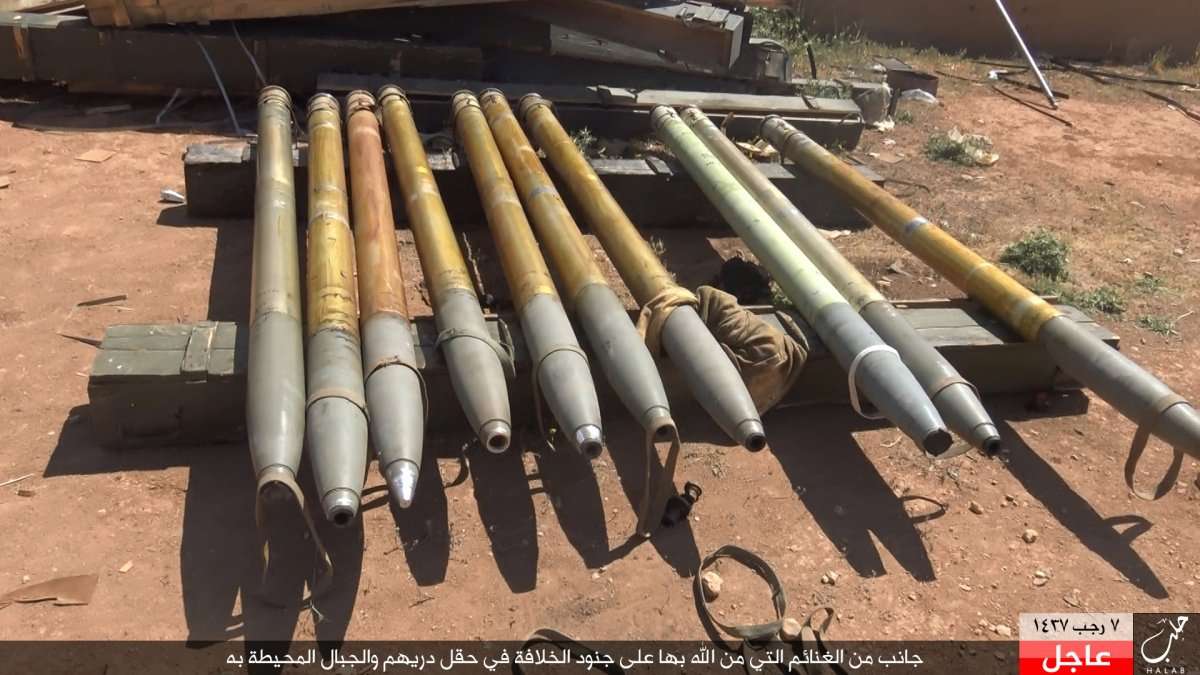
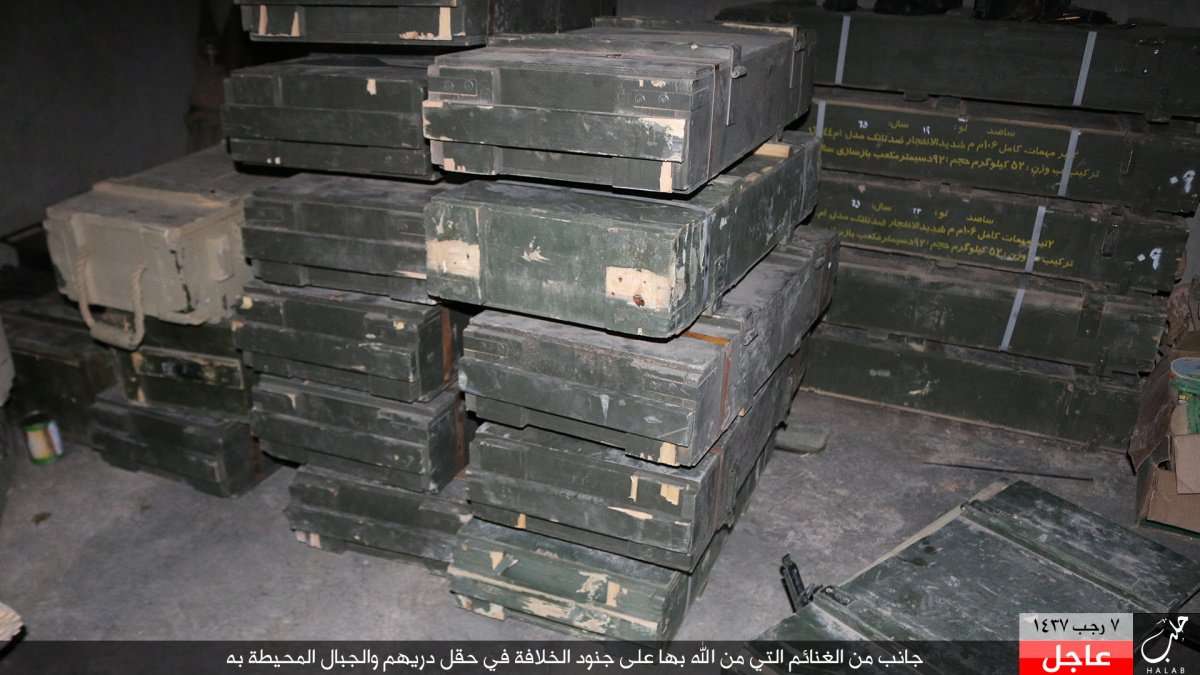
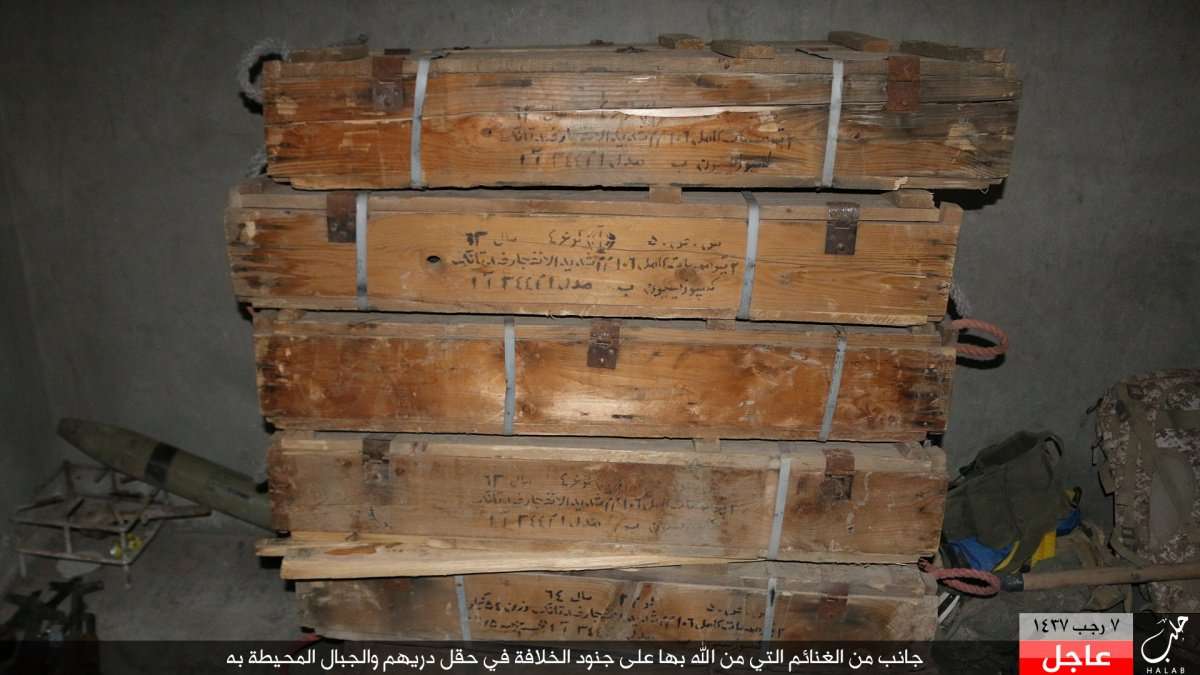
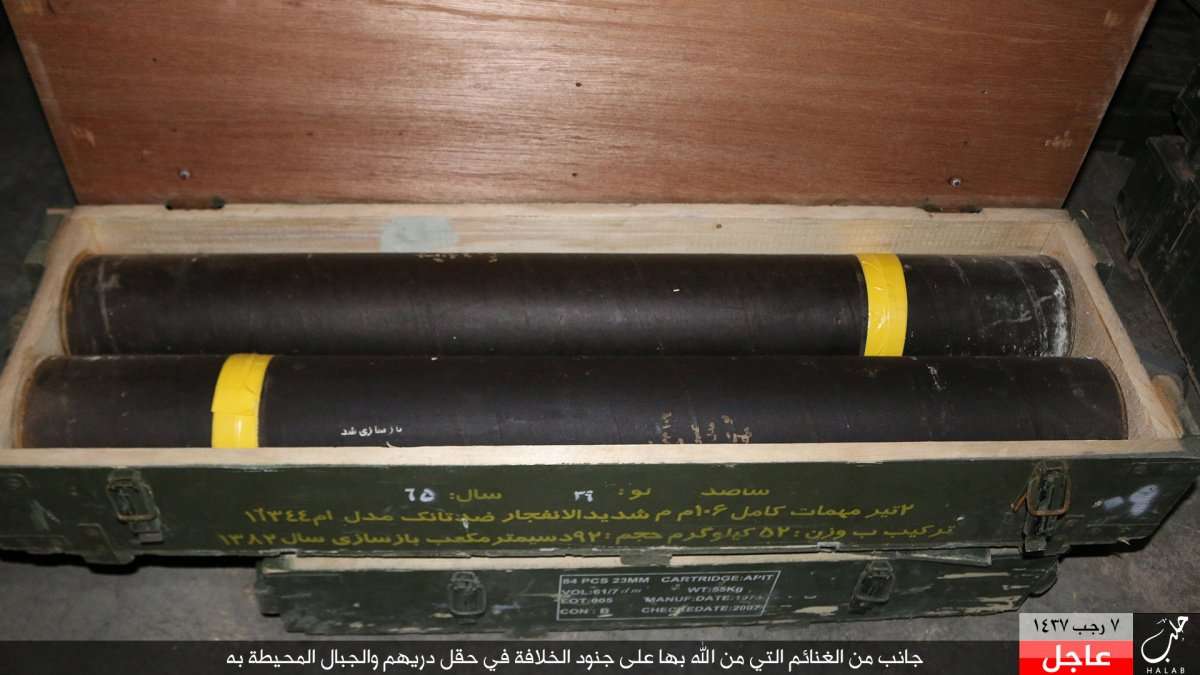
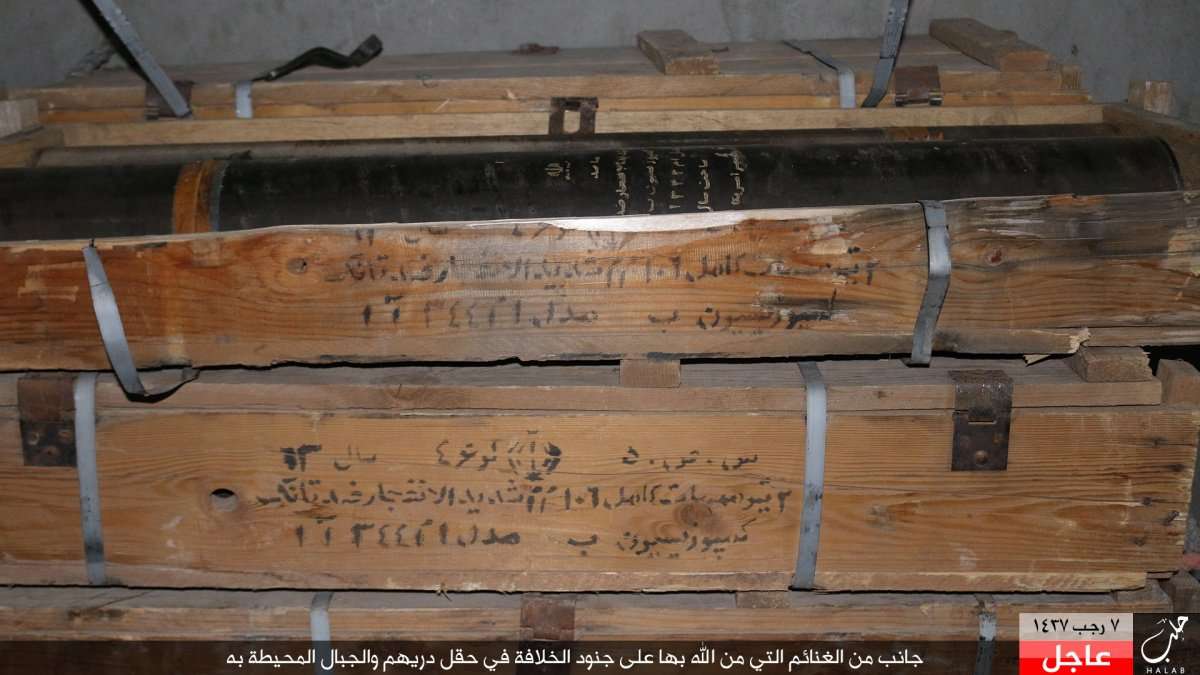
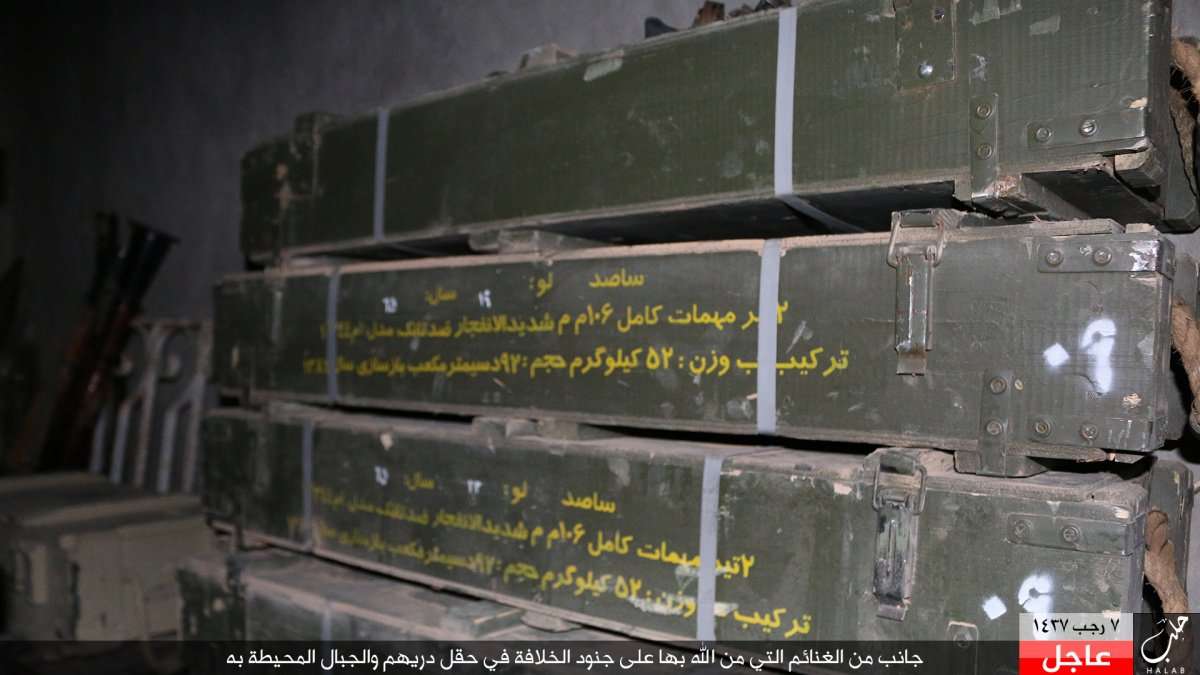
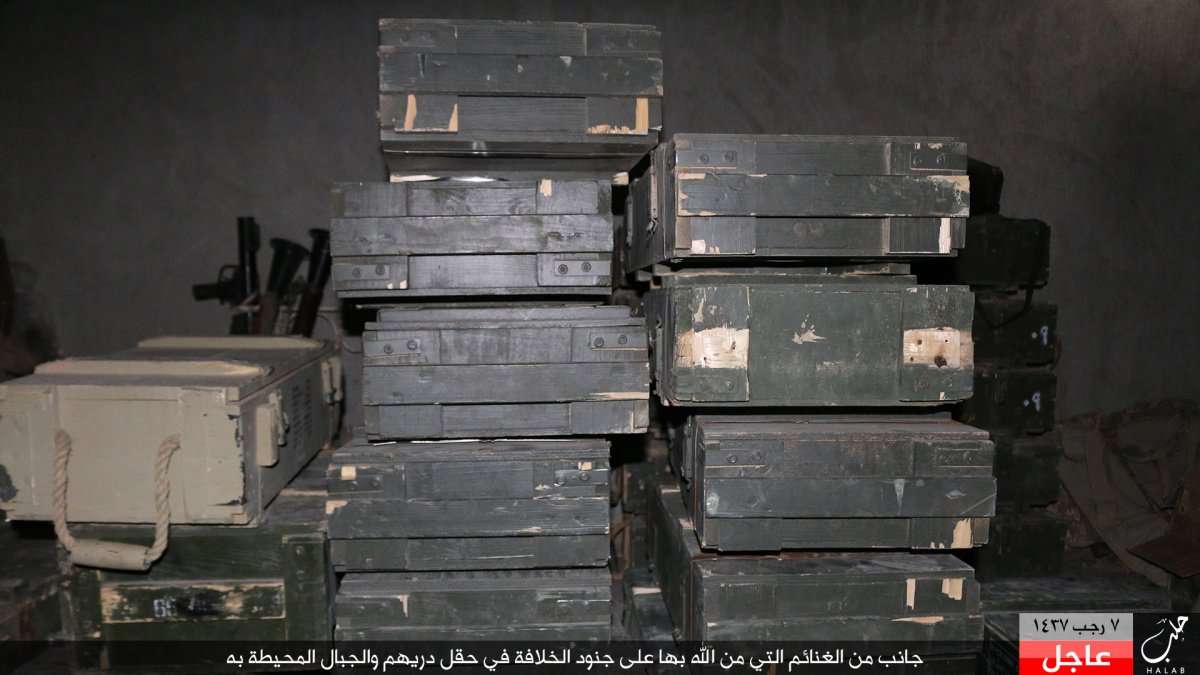
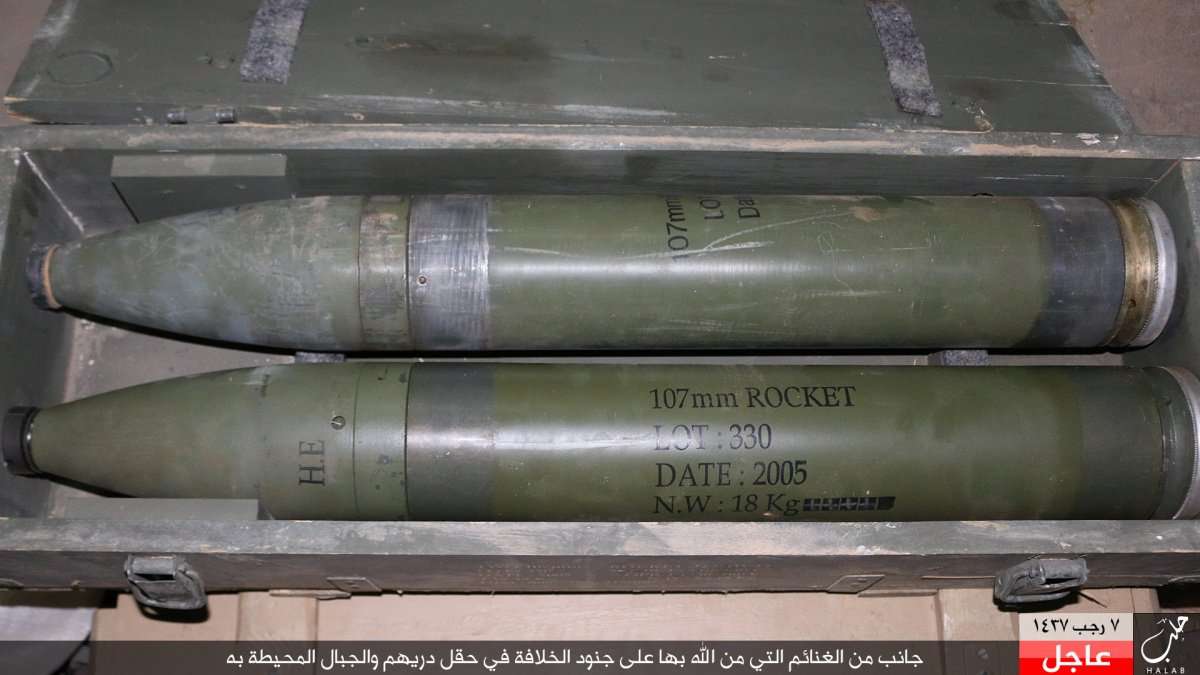
Small arms ammunition, much of which of Iranian origin too. Although a large number of 23mm rounds were captured, no 23mm guns were seen among the spoils, making it likely the trucks or technicals they were put on left the scene before the Islamic State took over.
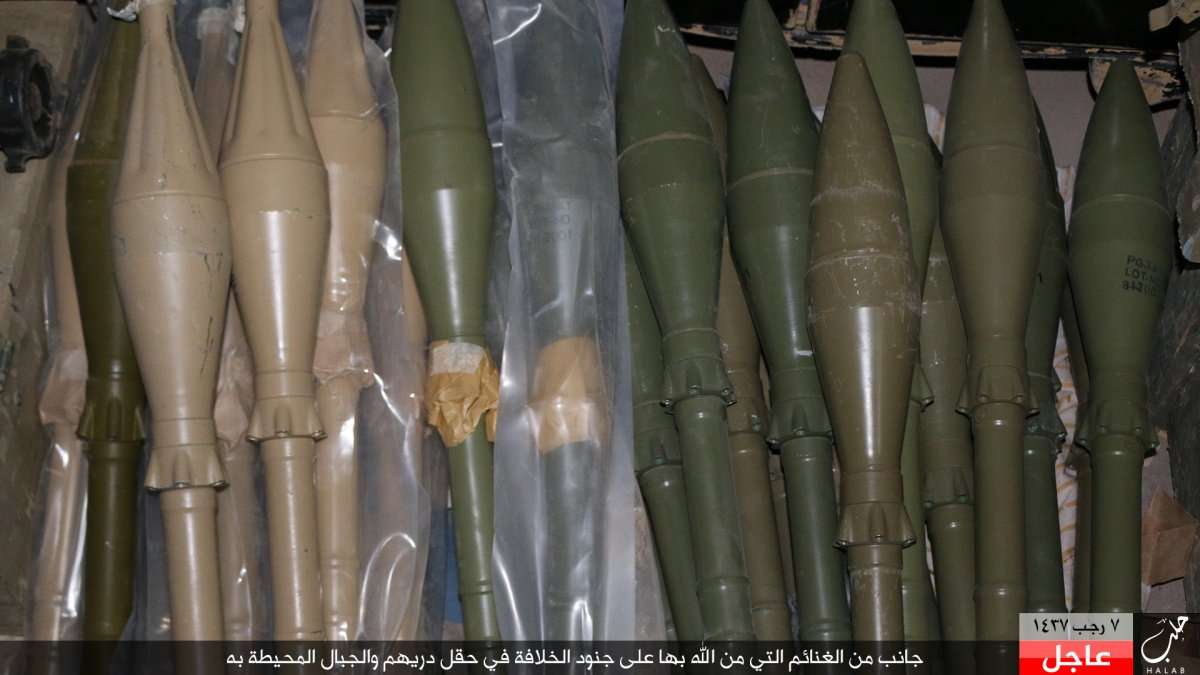
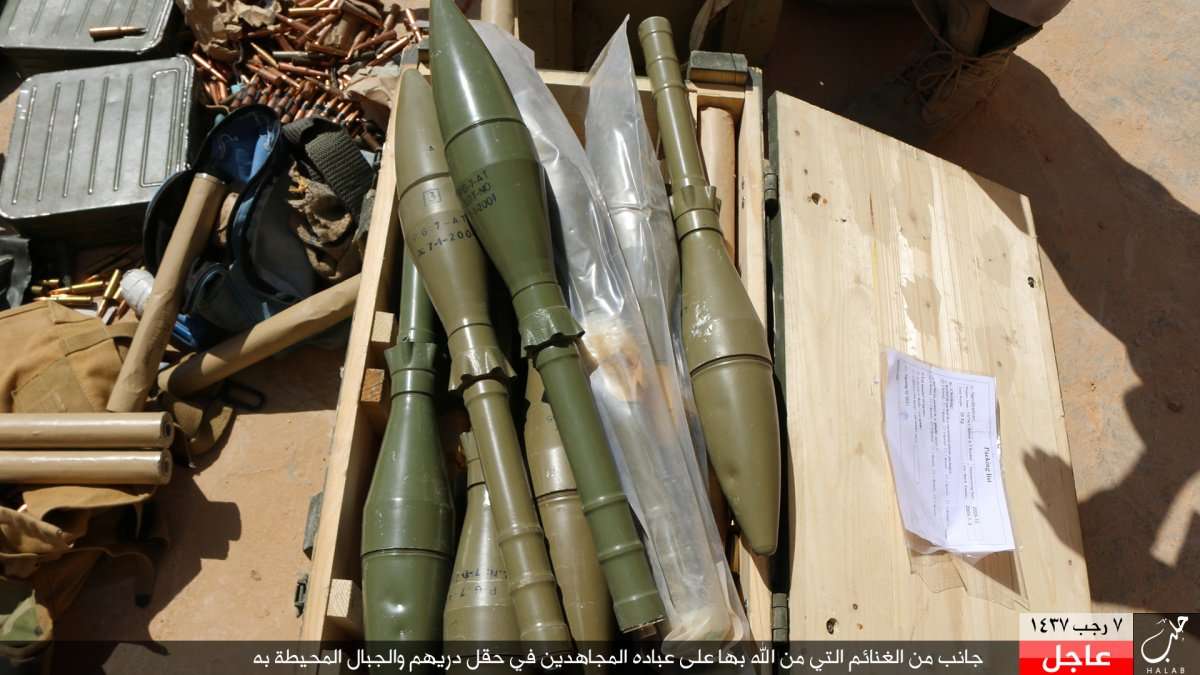
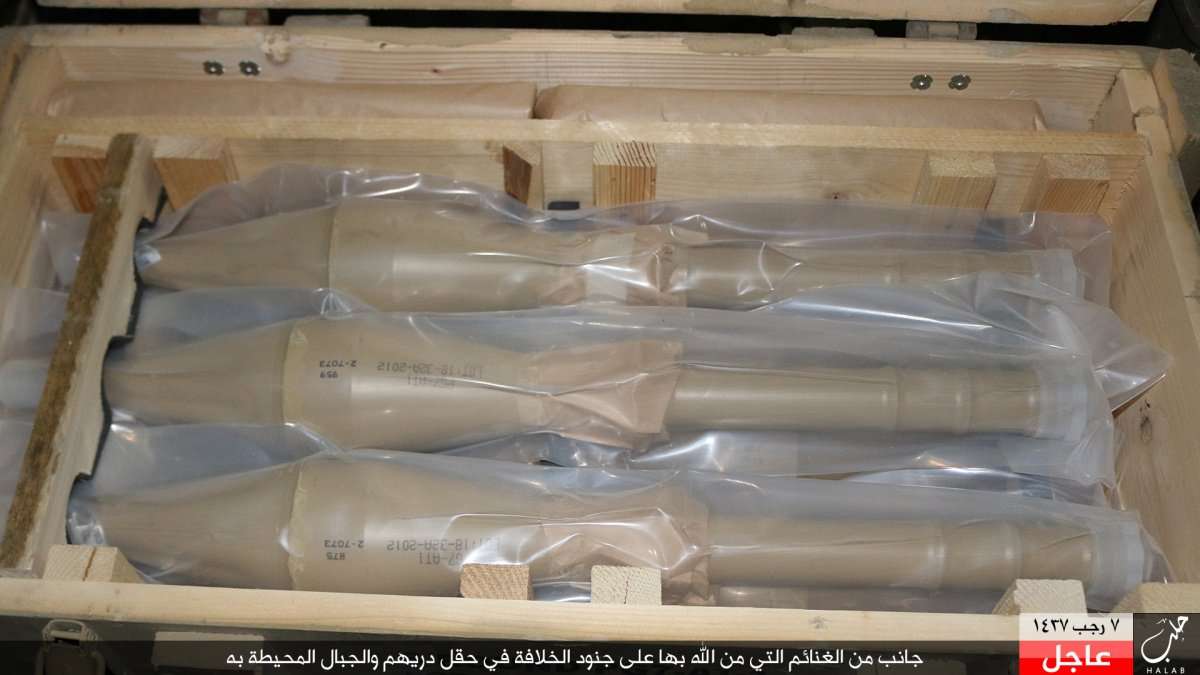
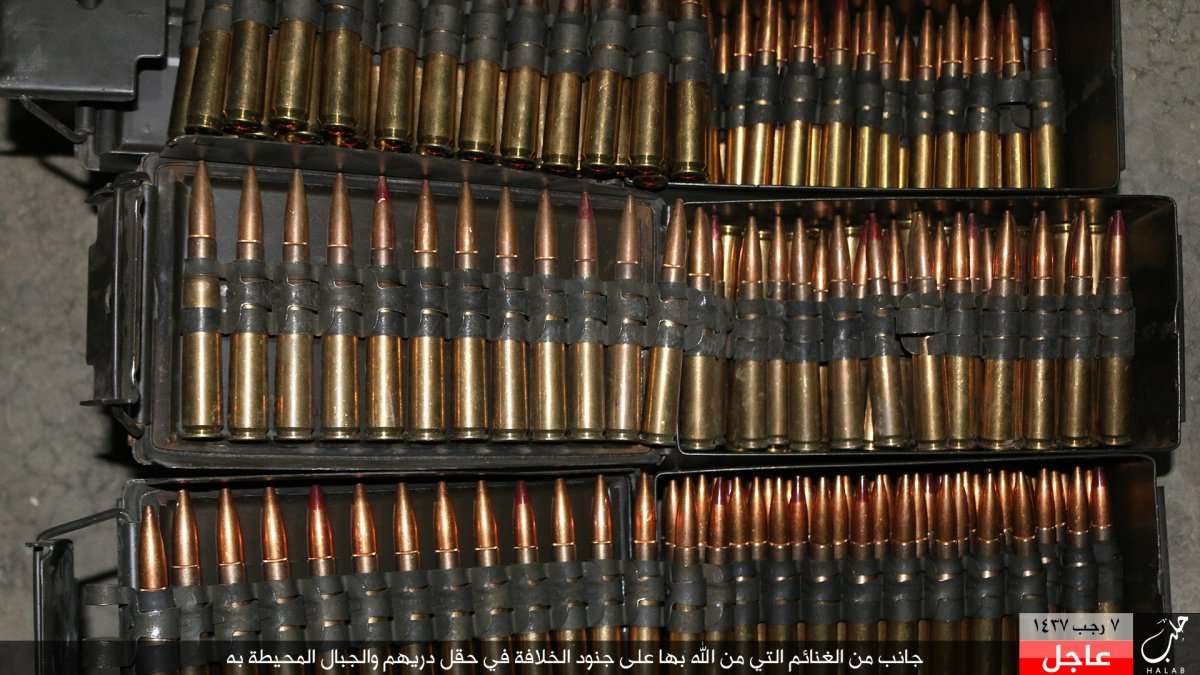
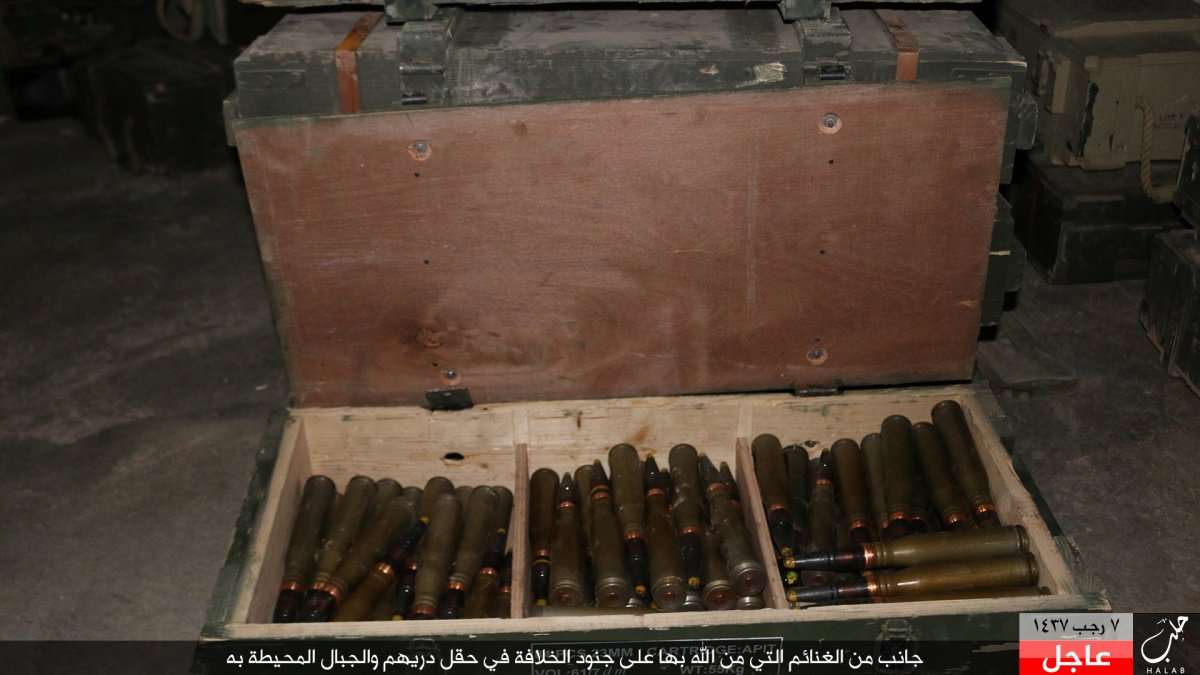
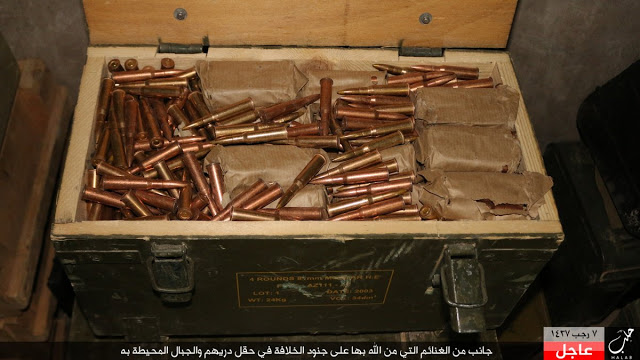
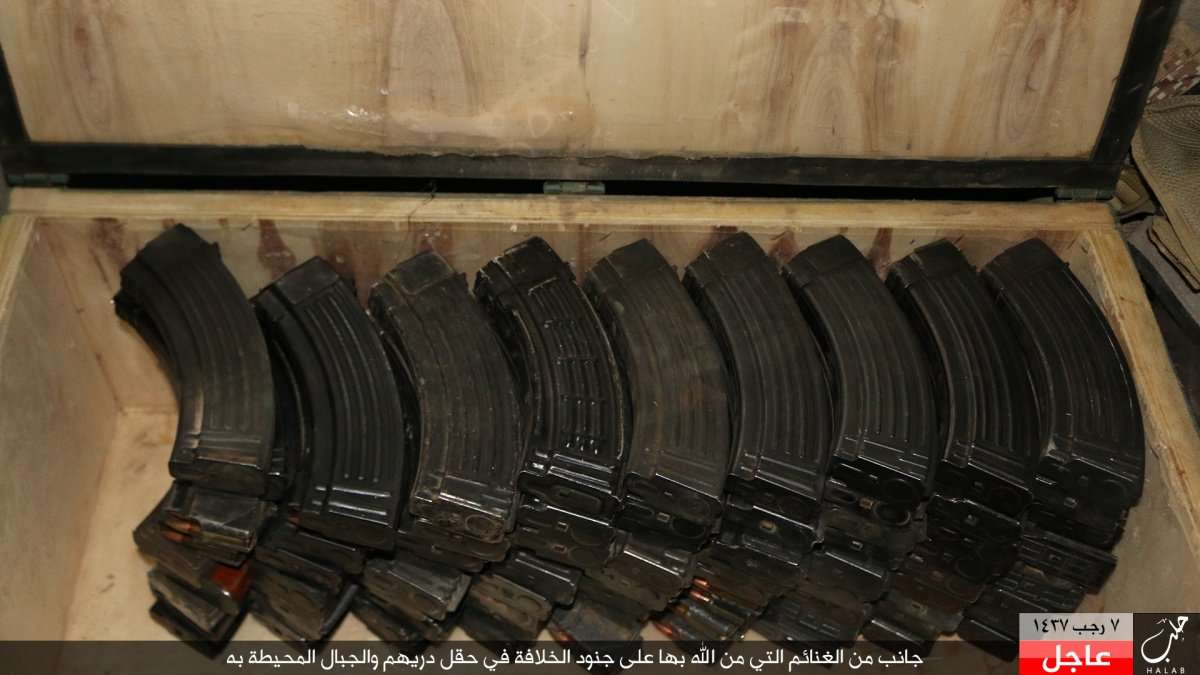
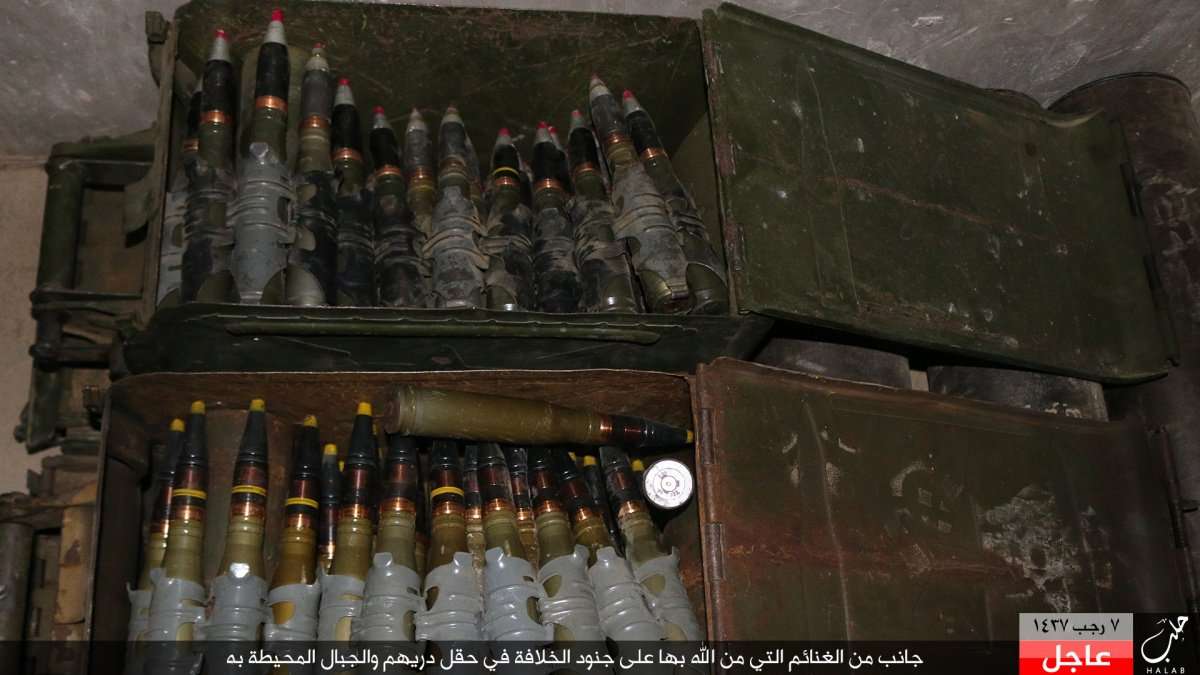
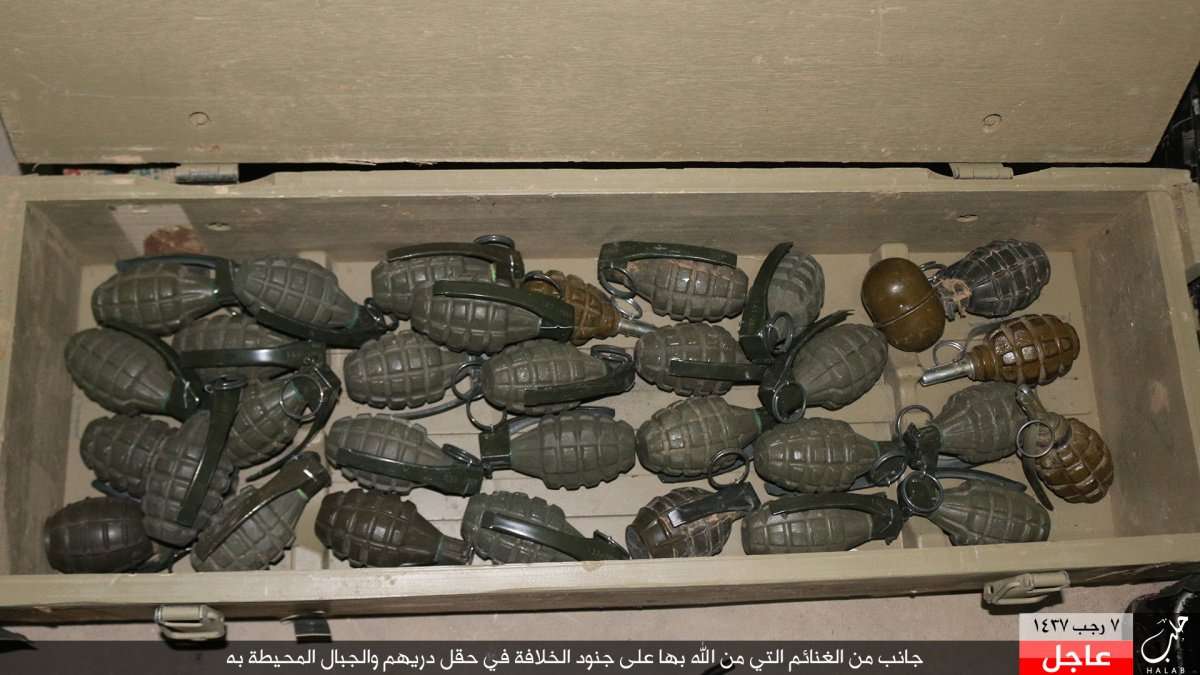
What is believed to be Iranian and (Shiite) Iraqi military gear, left behind by the soldiers formerly stationed here. Images released by the Islamic State showed around a dozen fighters fleeing from their checkpoints, undoubtedly also including Iranian soldiers and Shiite fighters from Iraq.
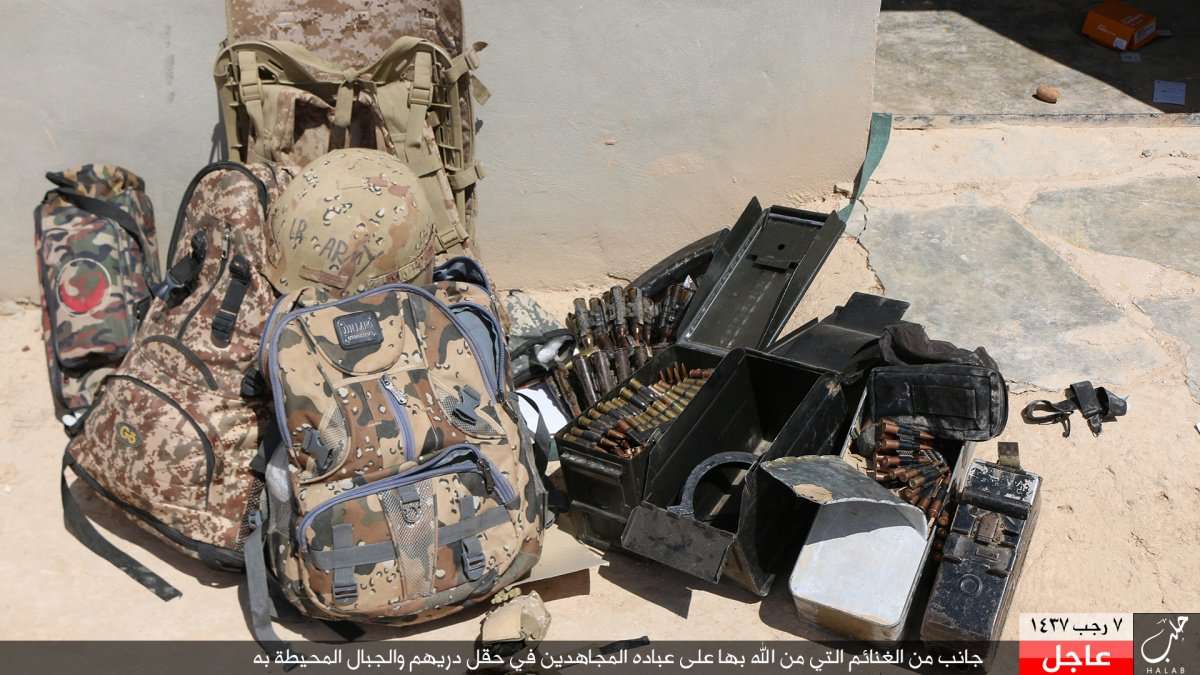
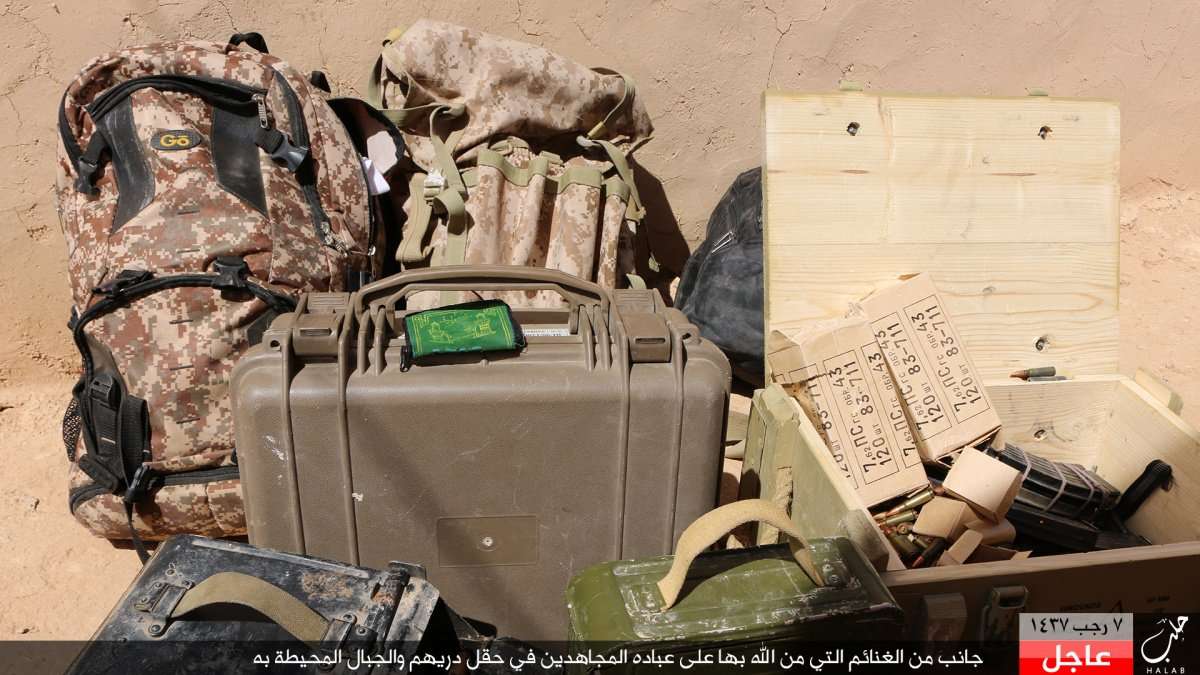
This article was a collaboration with MENA_Conflict from Type 63: A collection of Musings on Middle East Conflict and the Oryx Blog.
